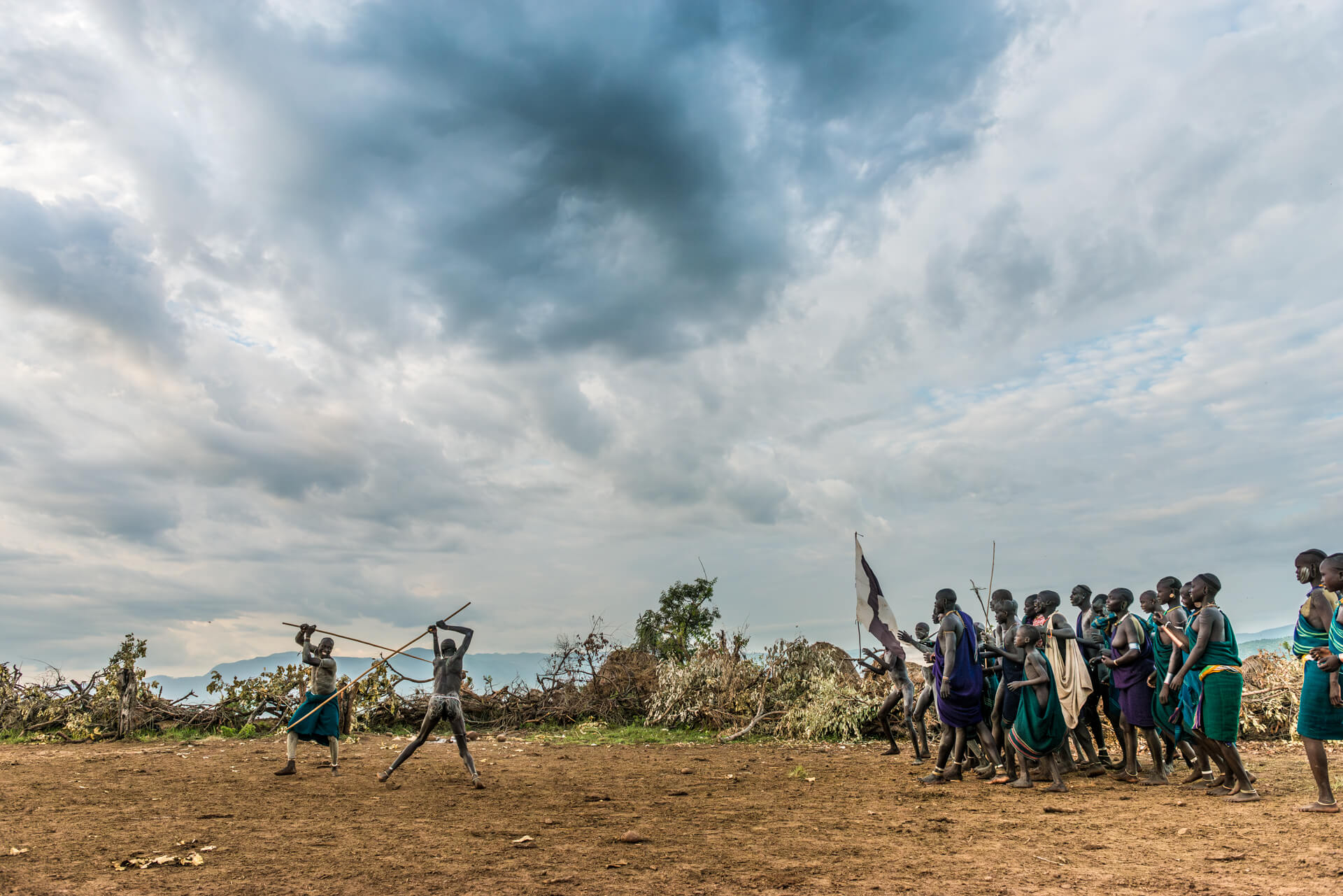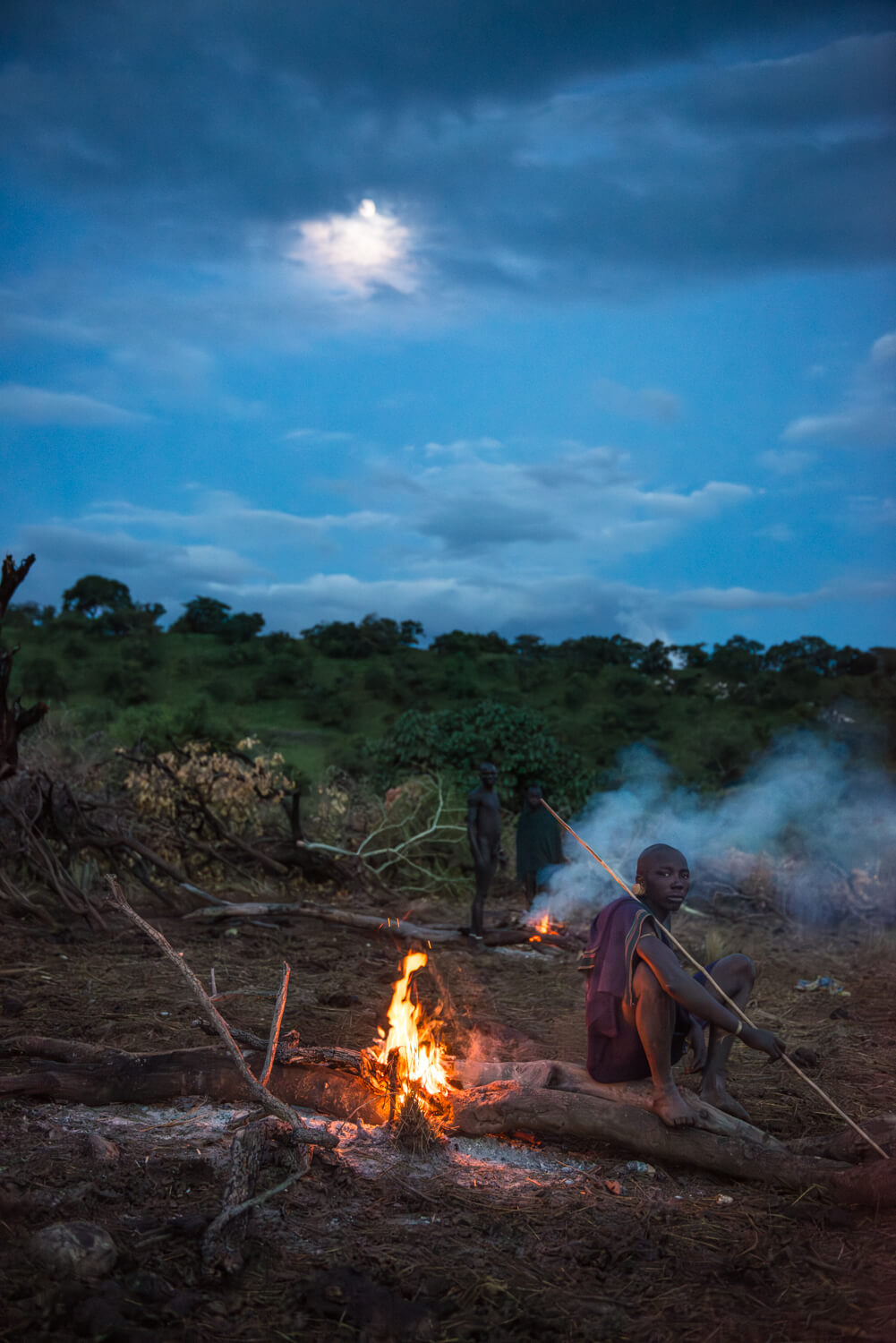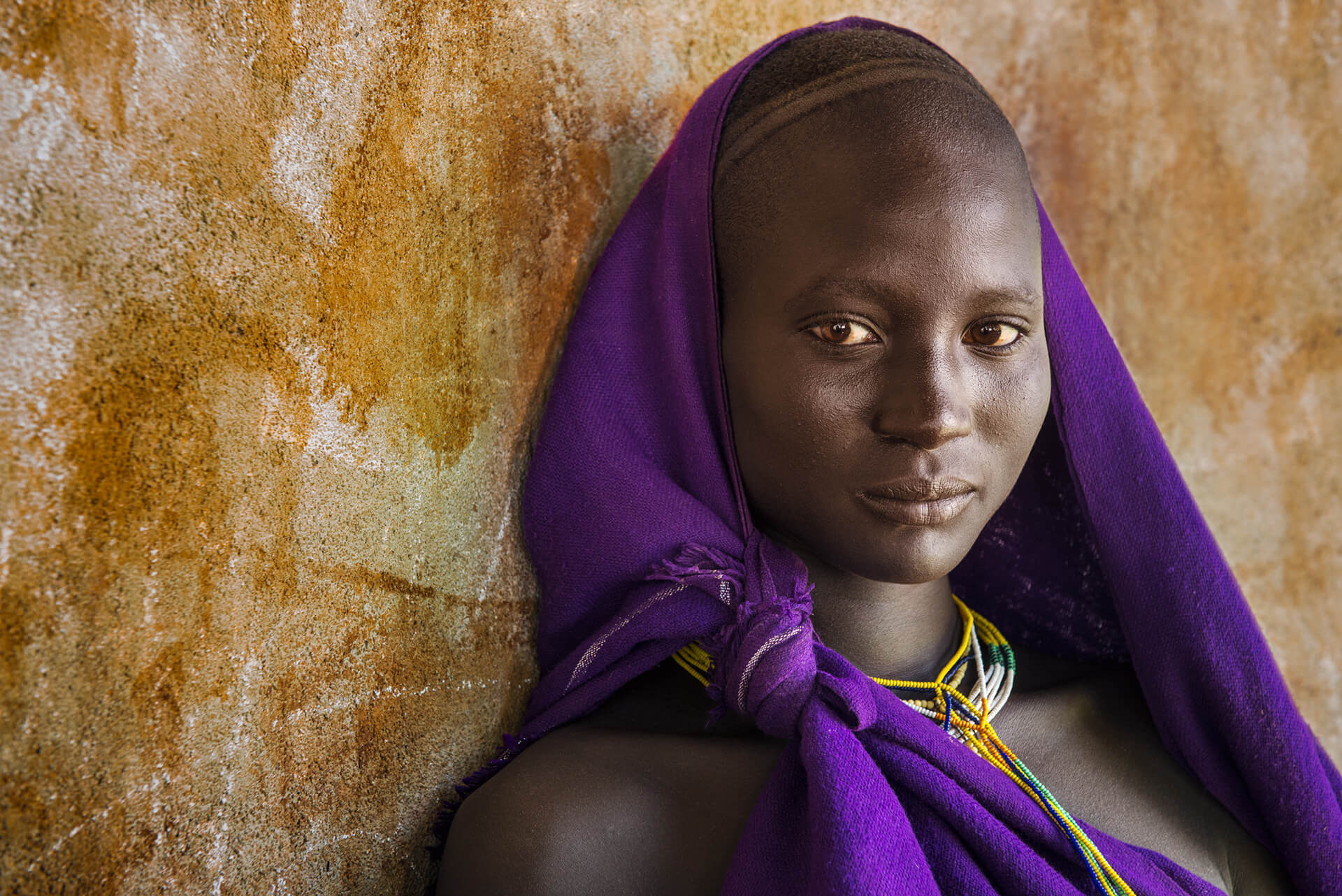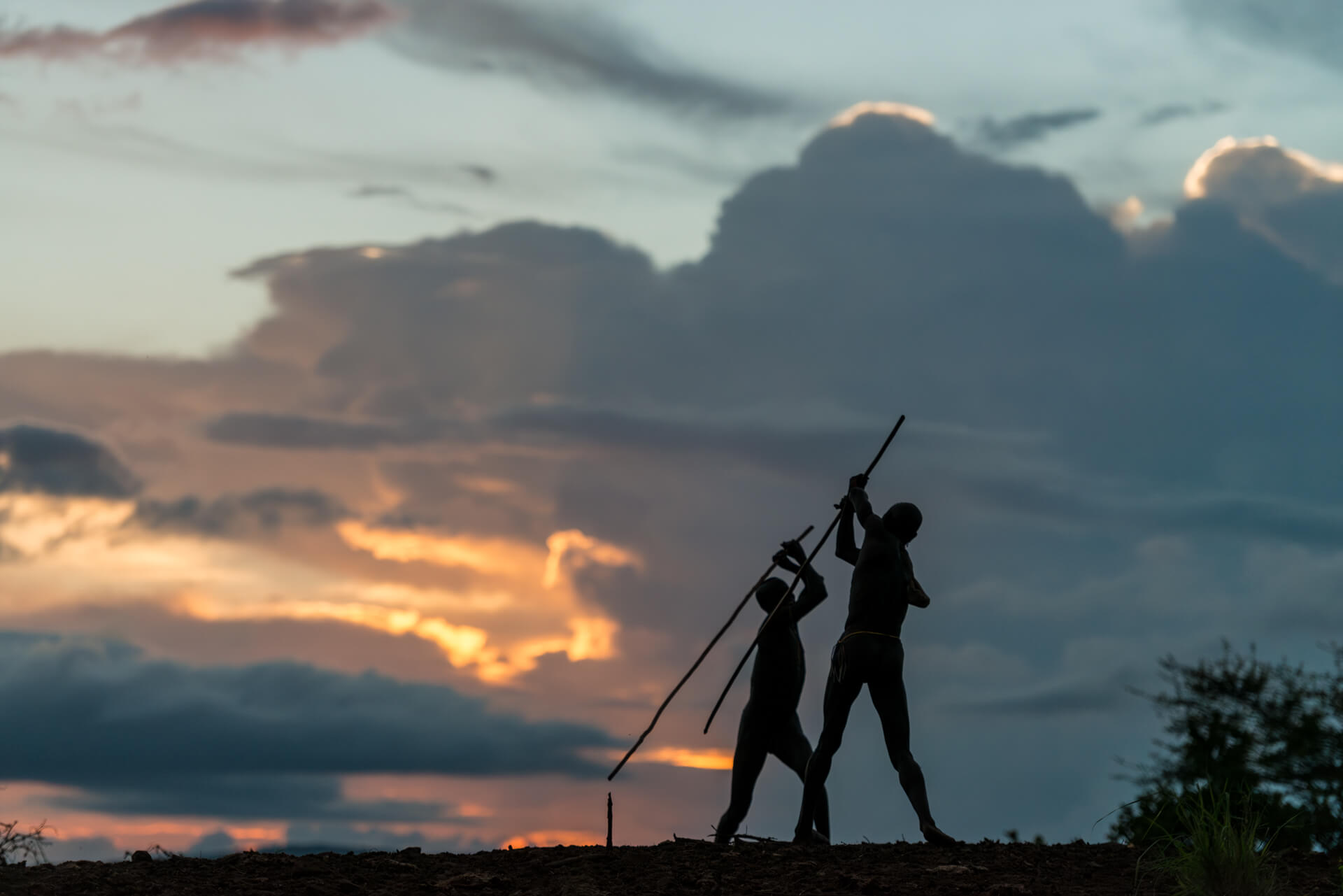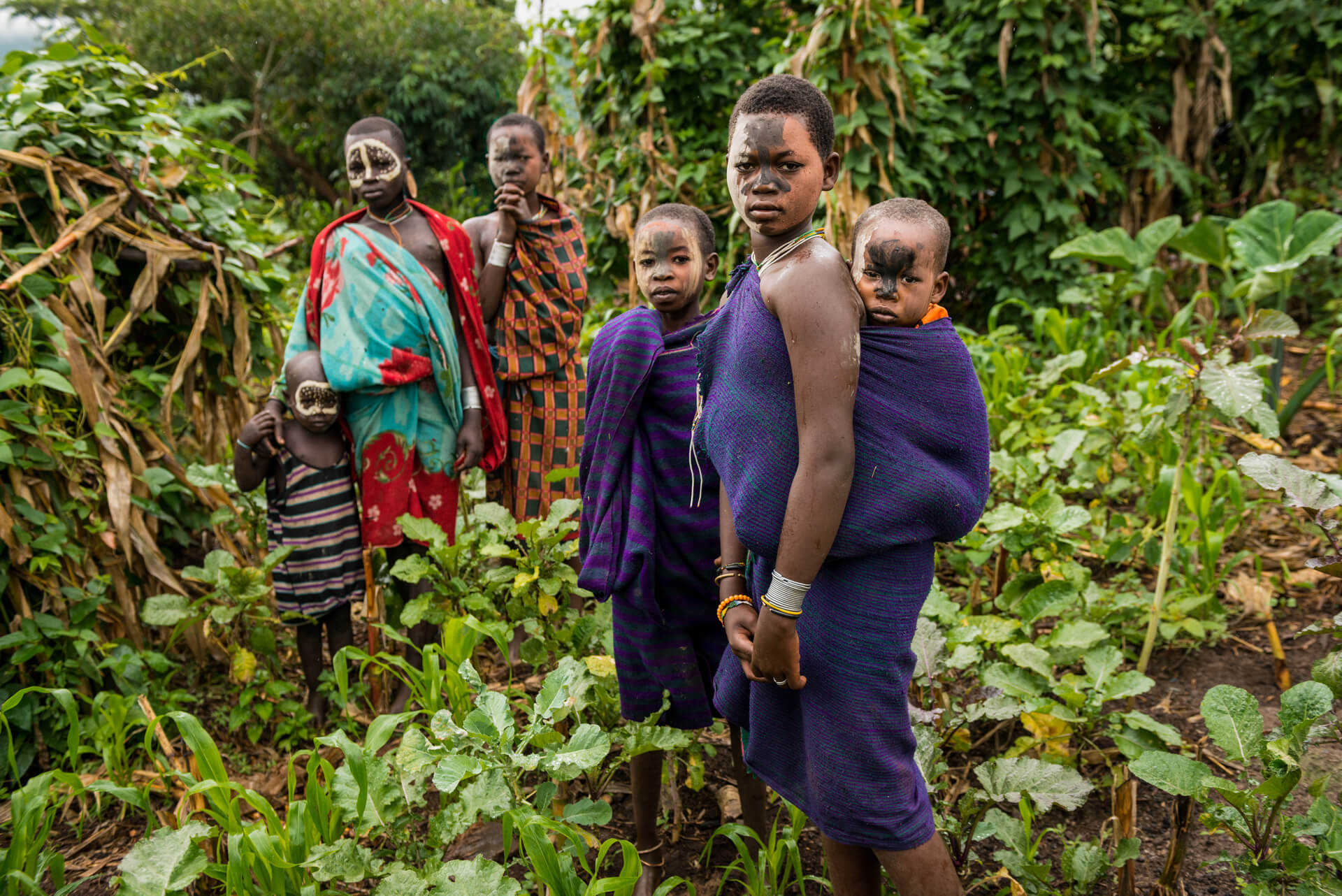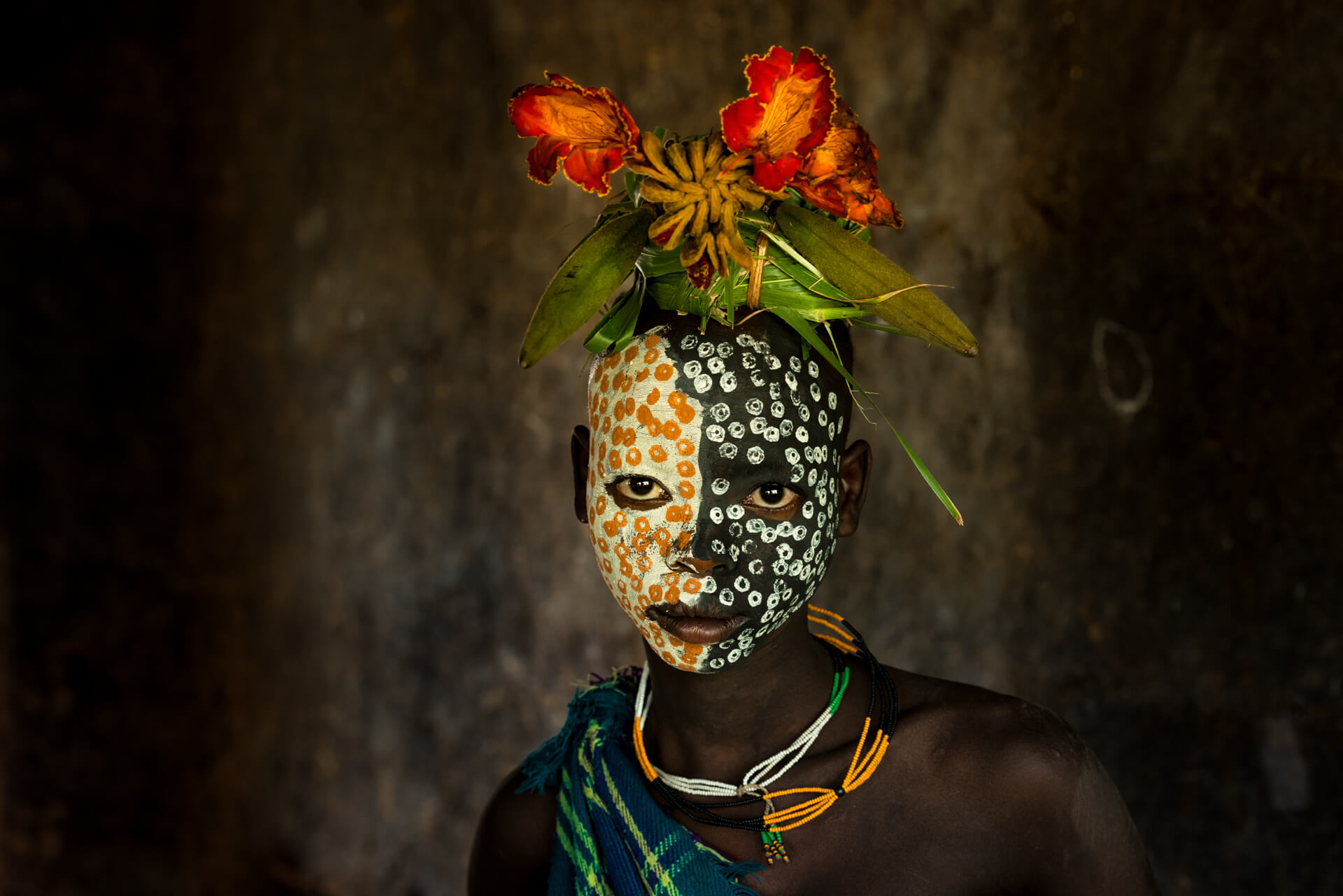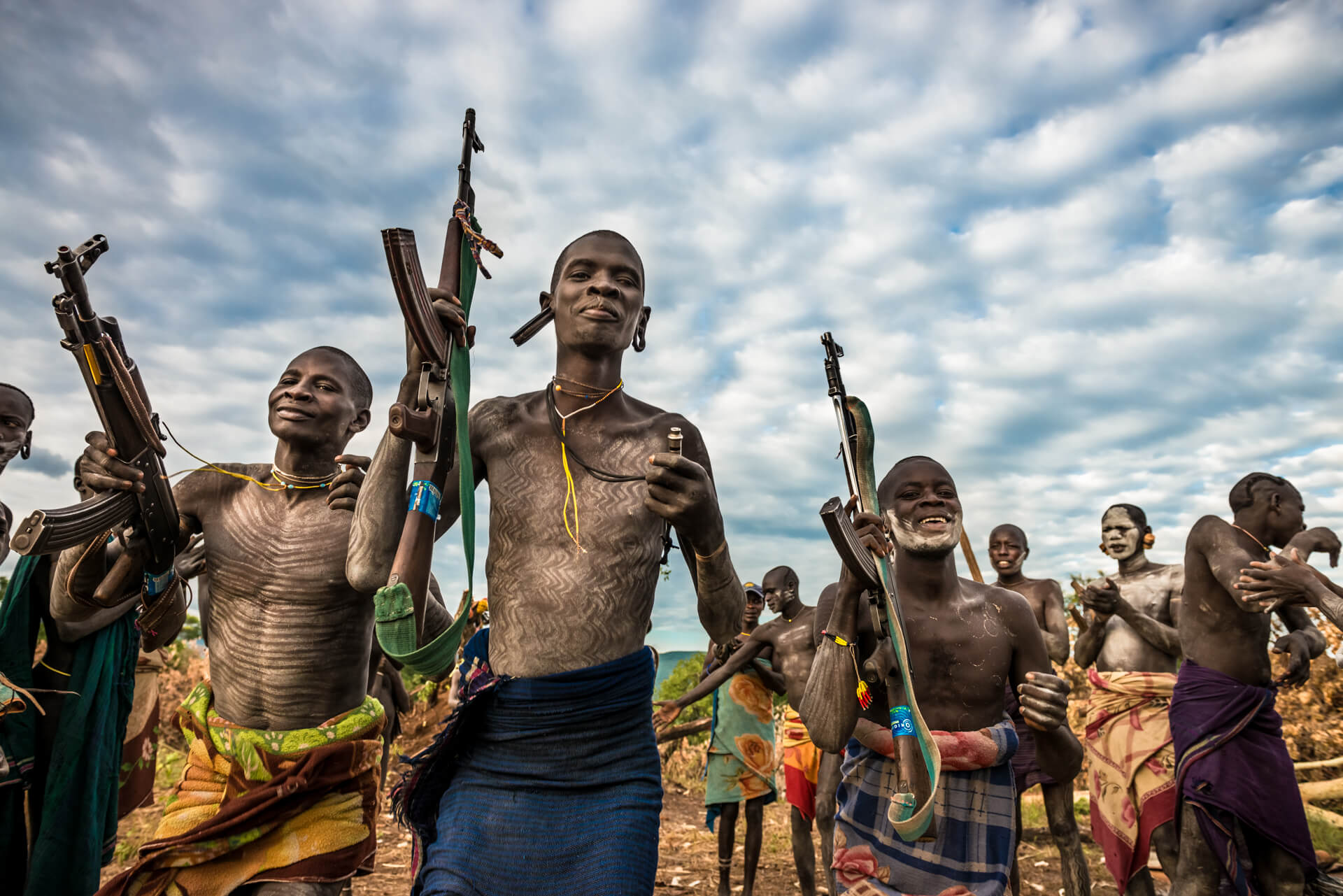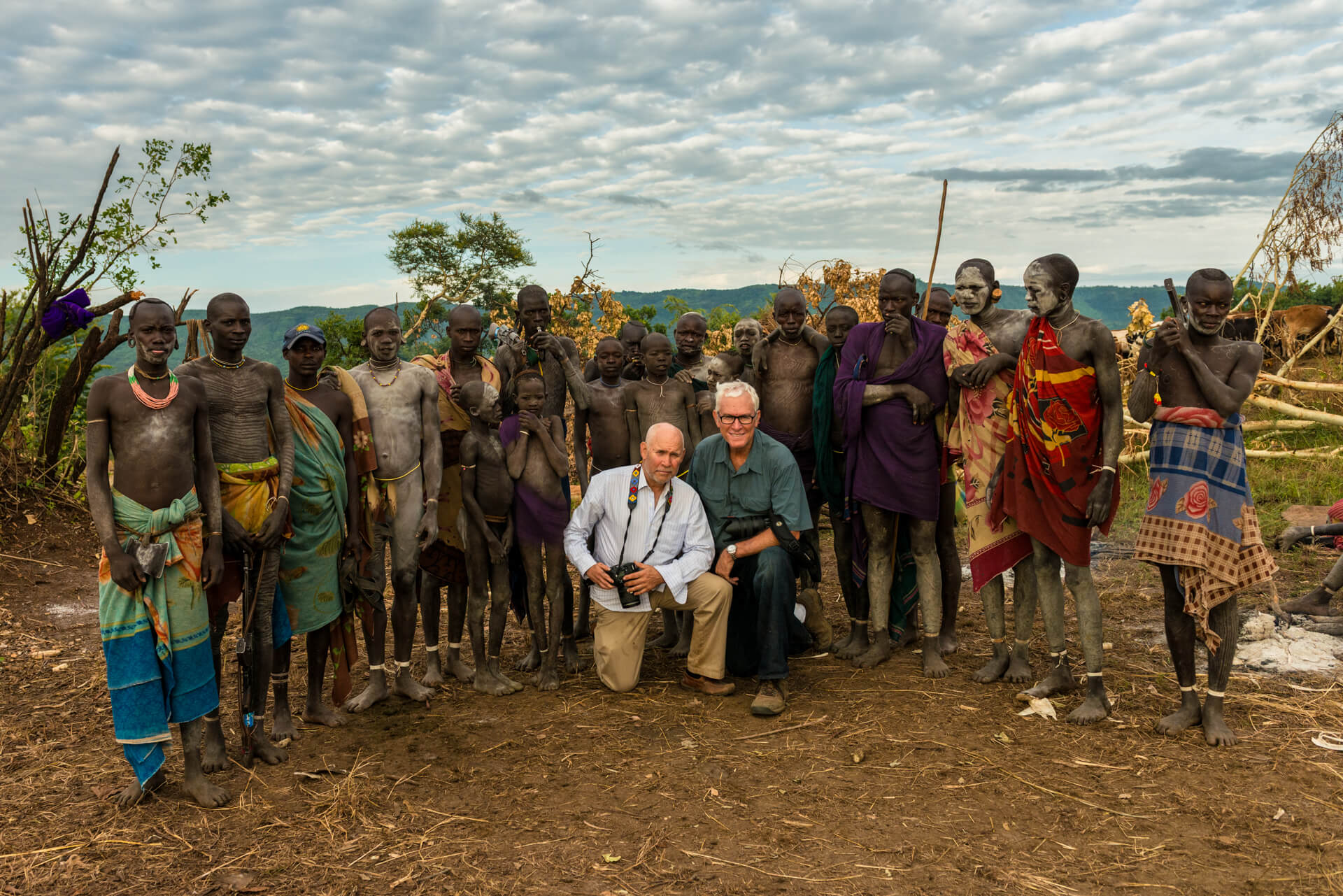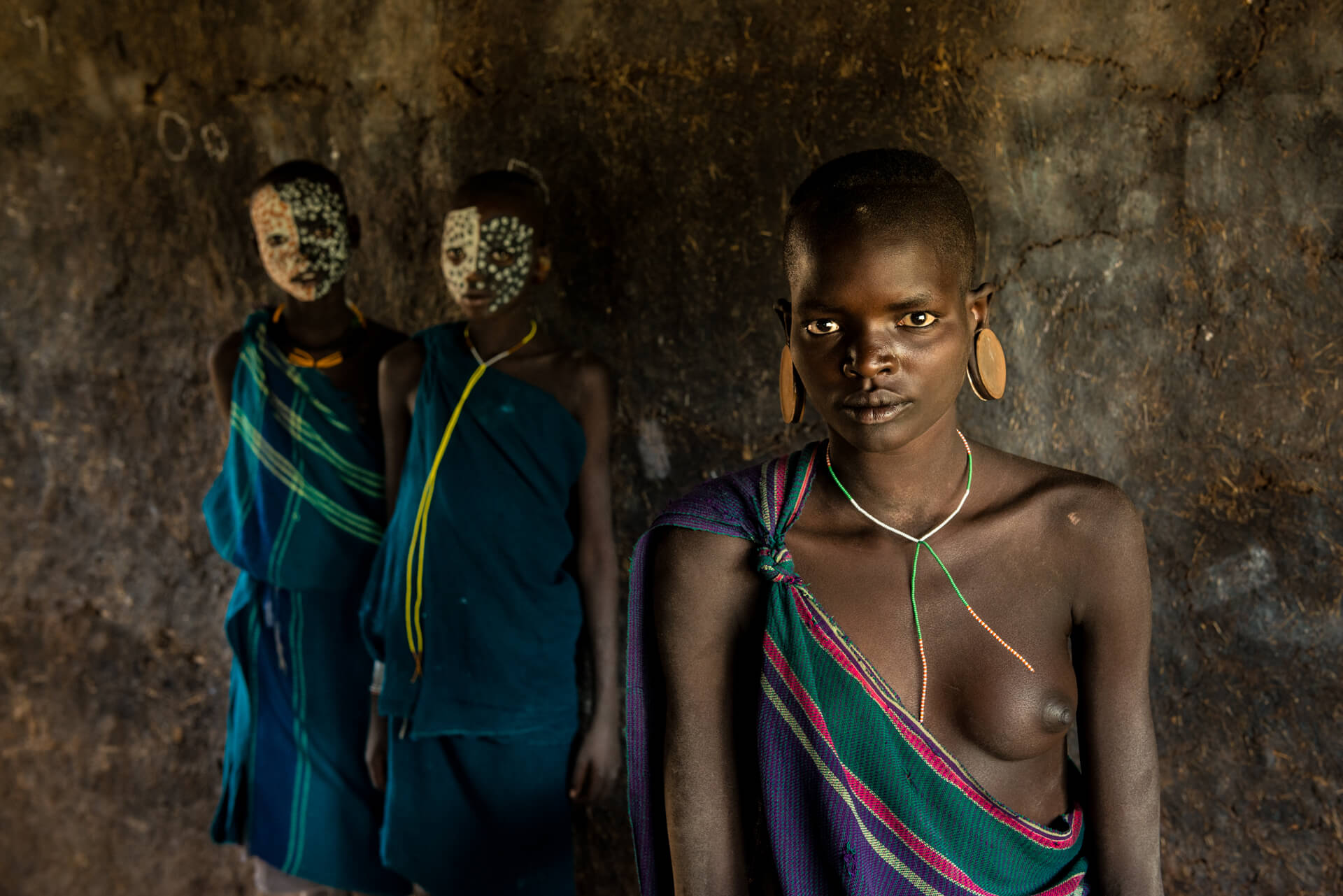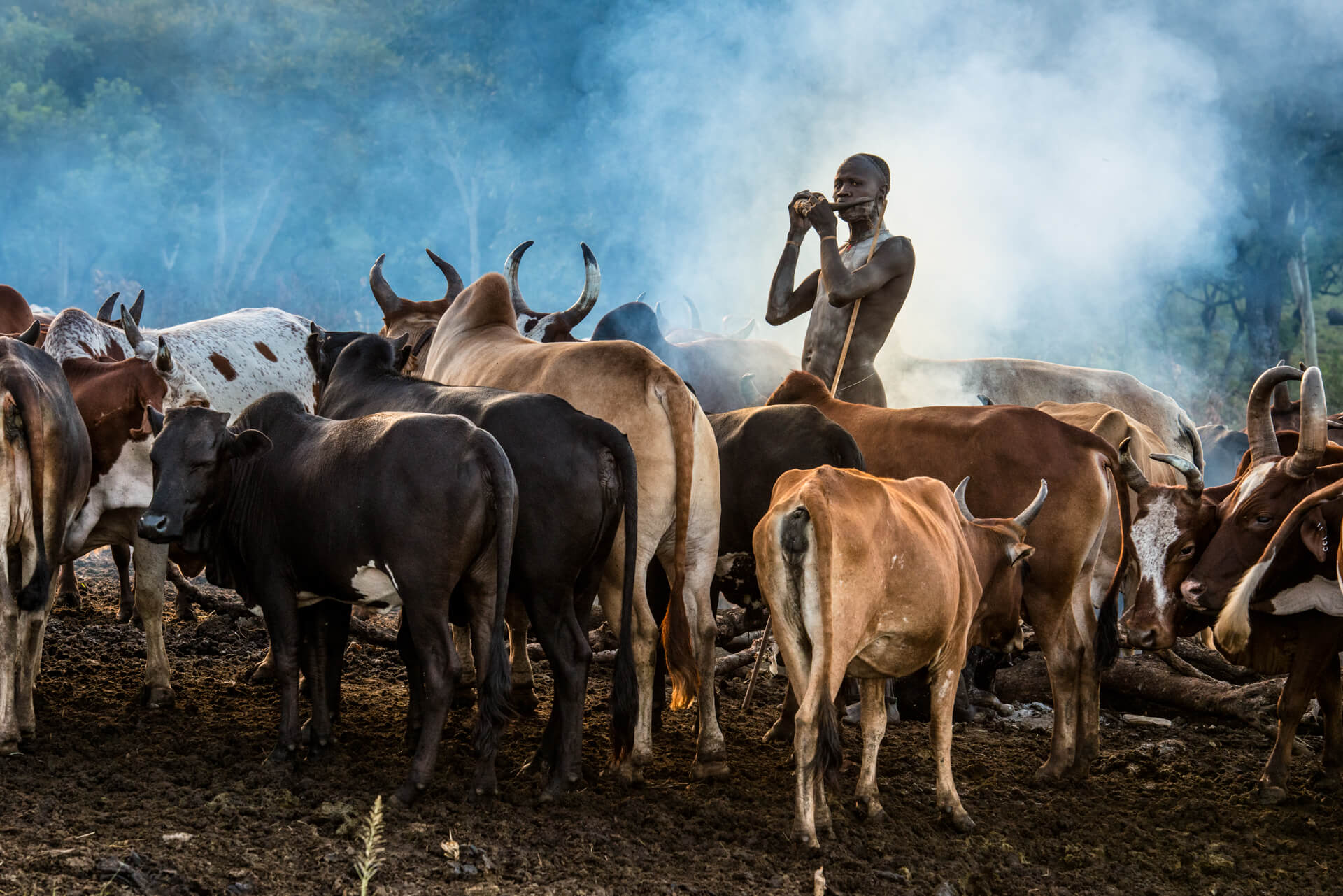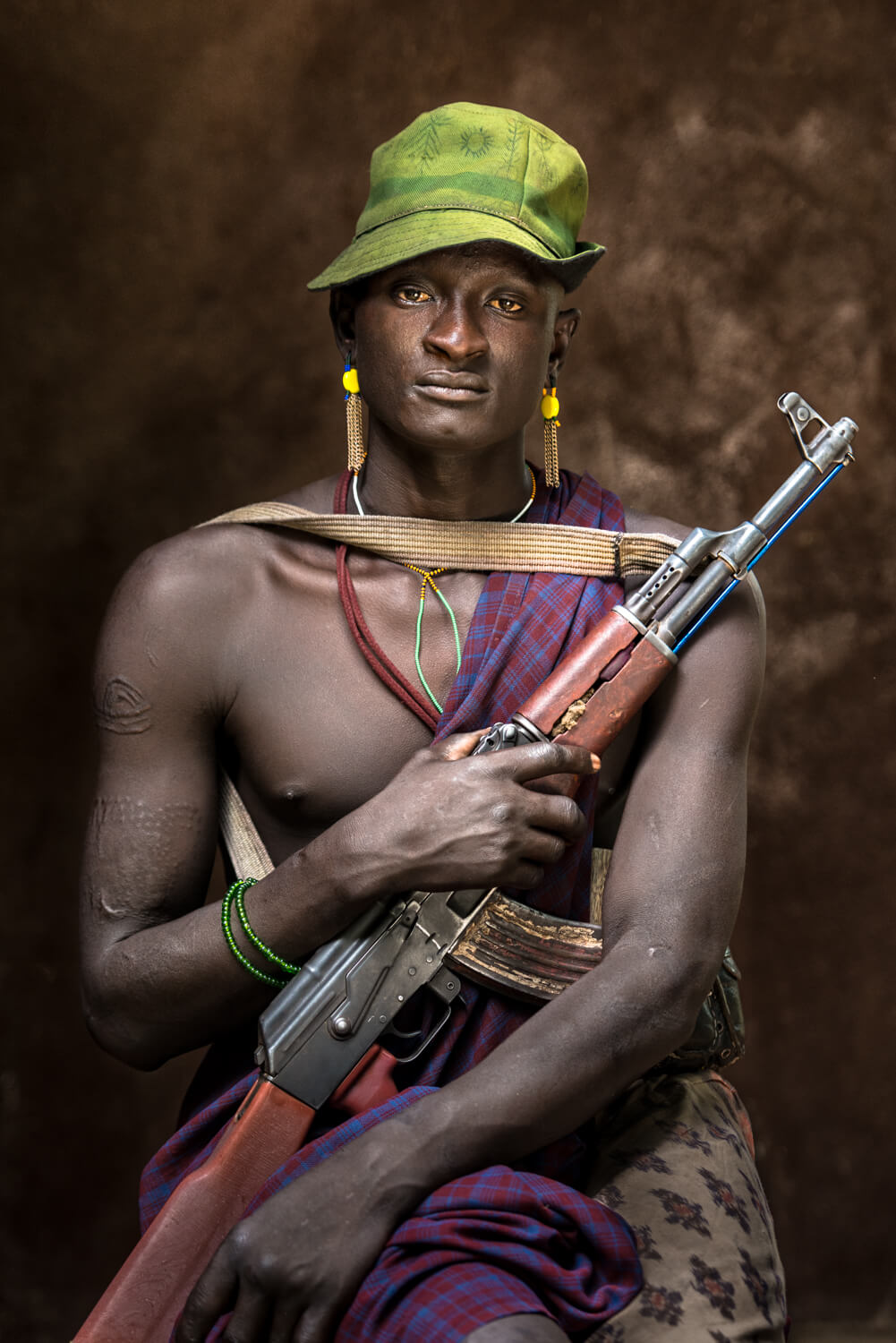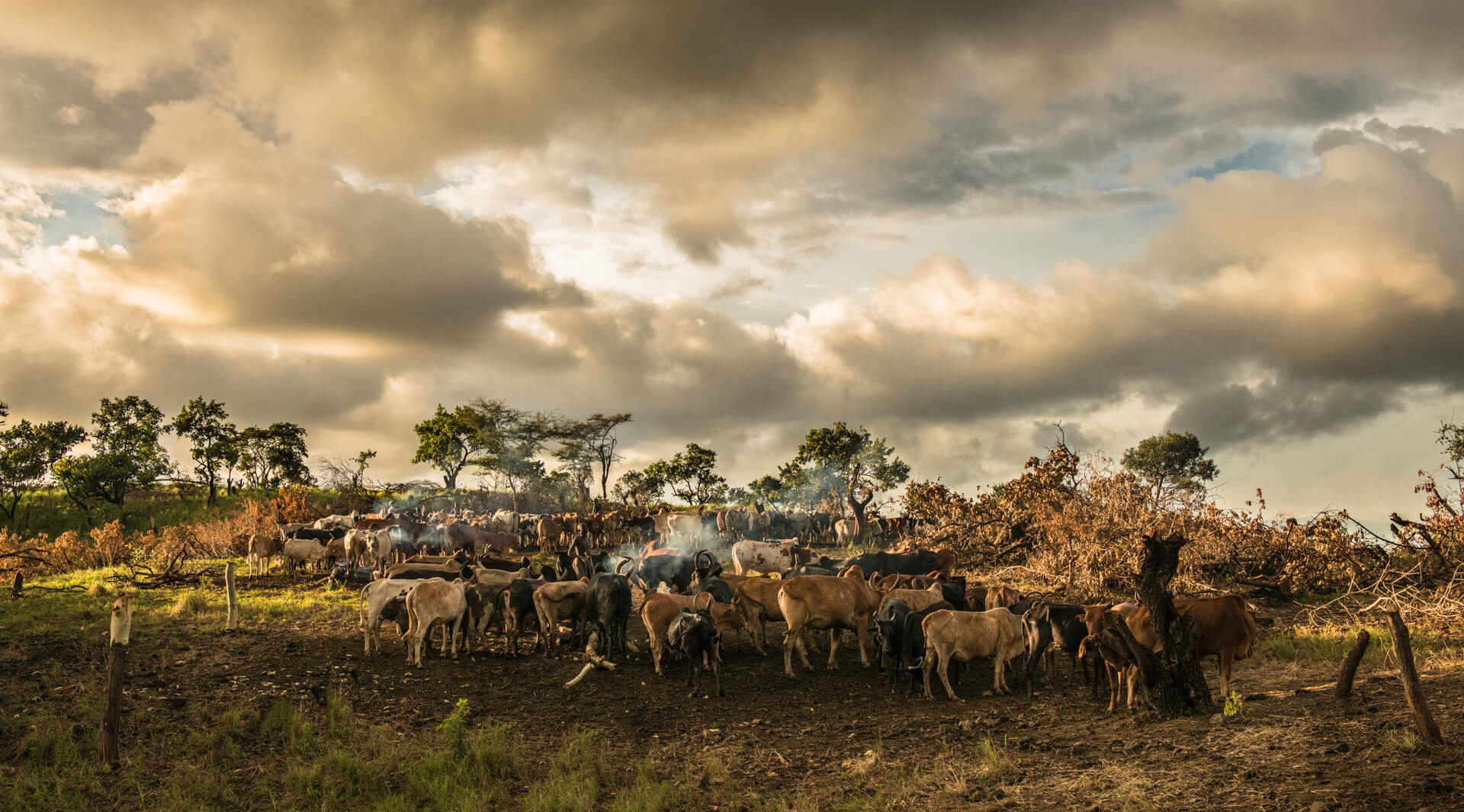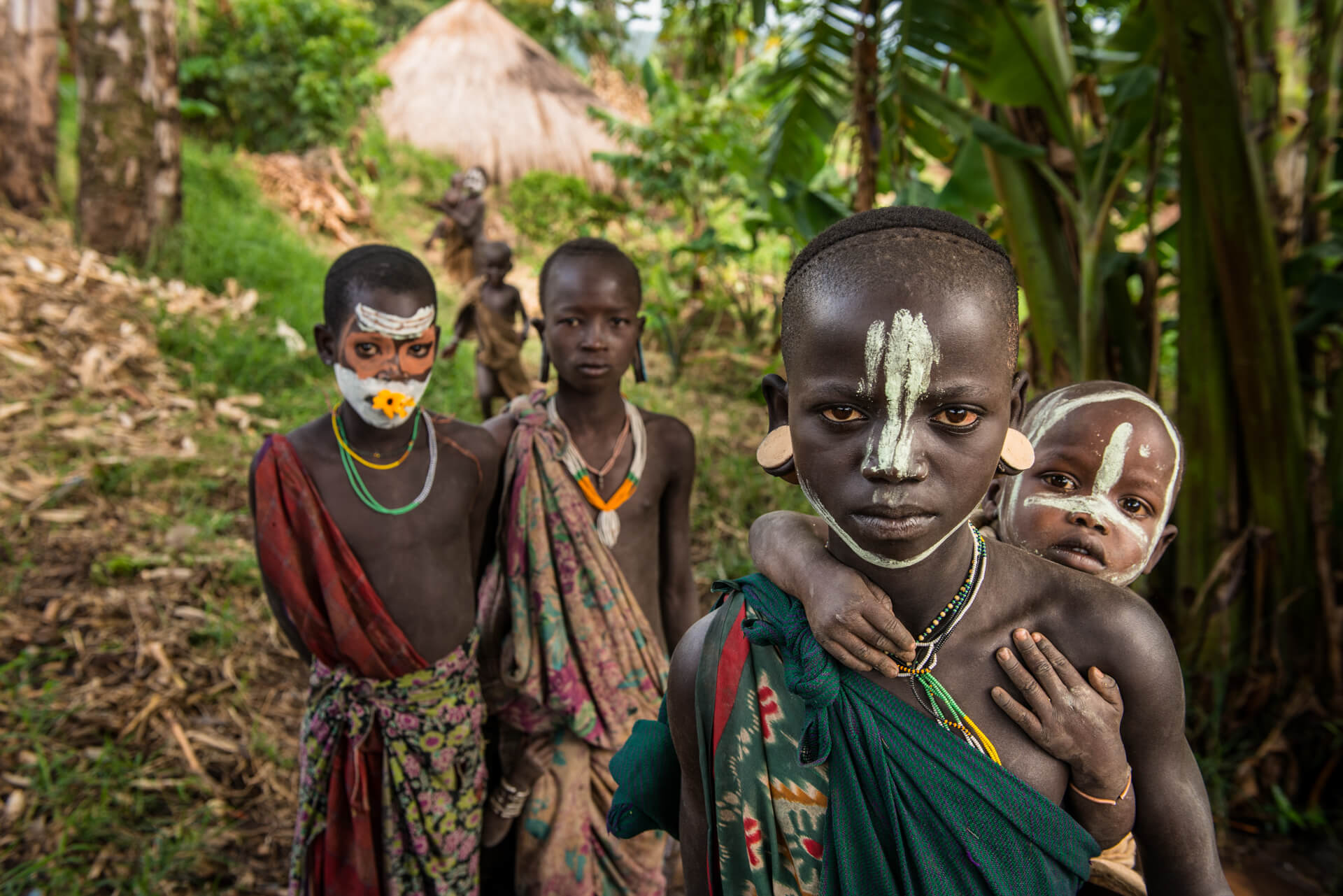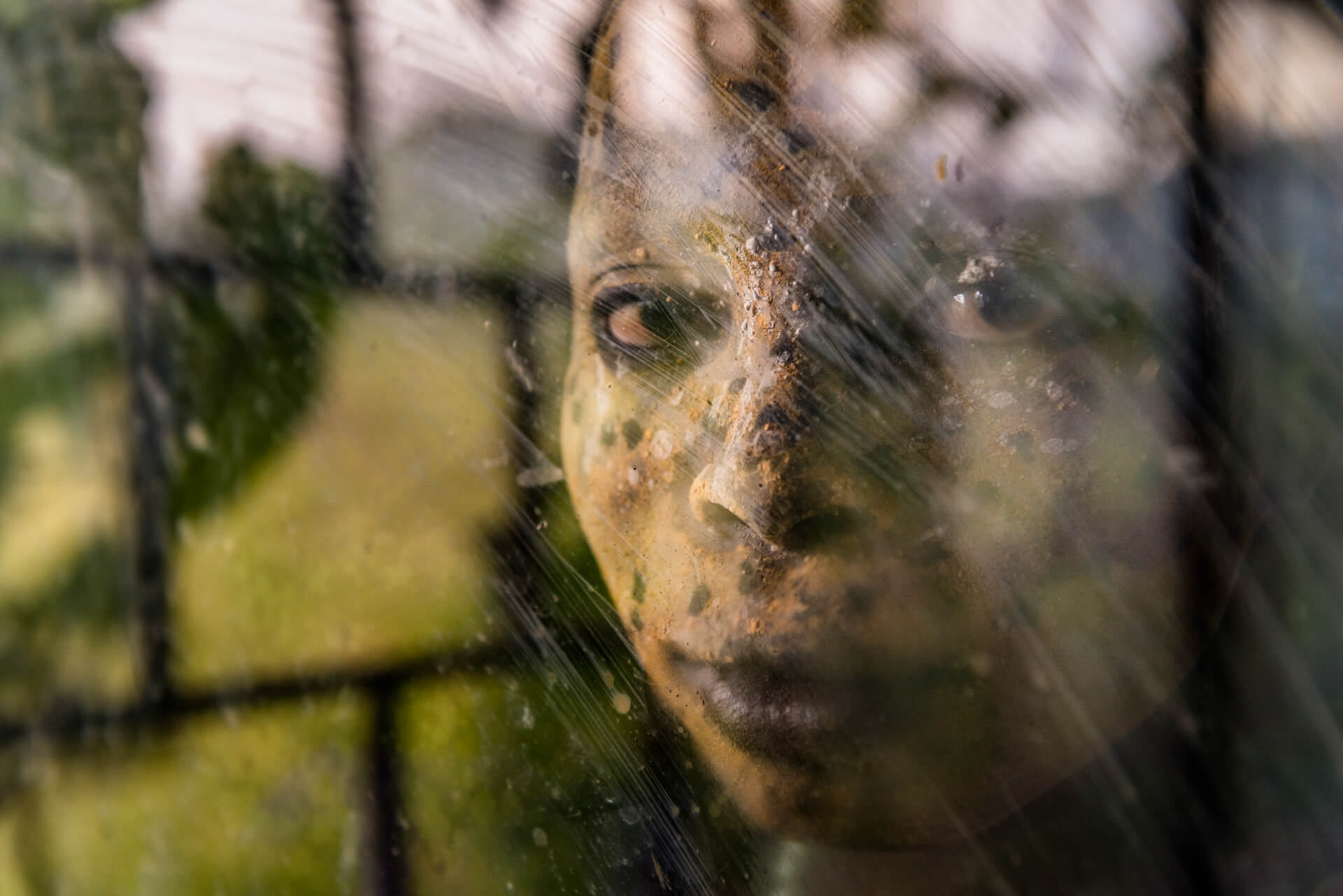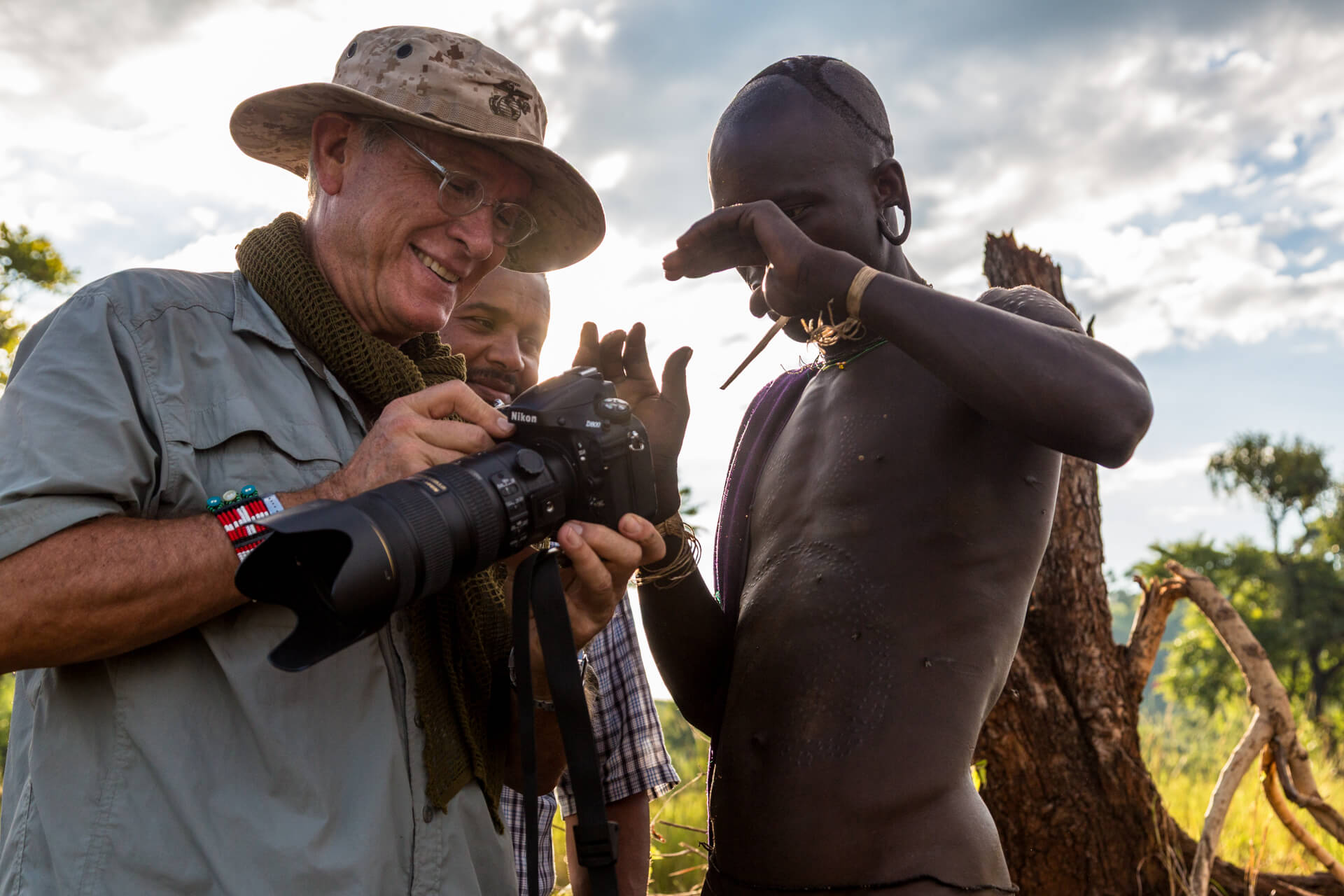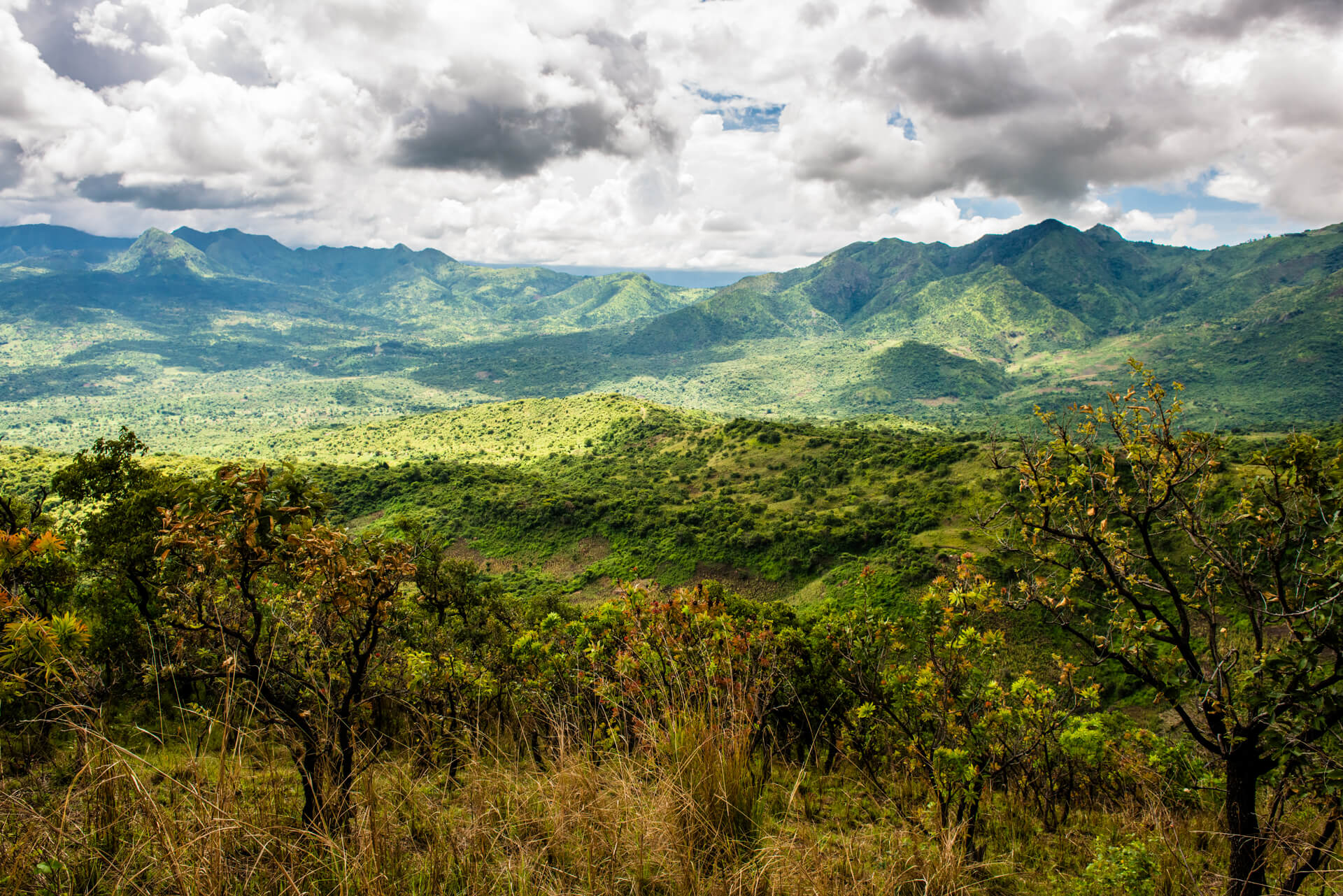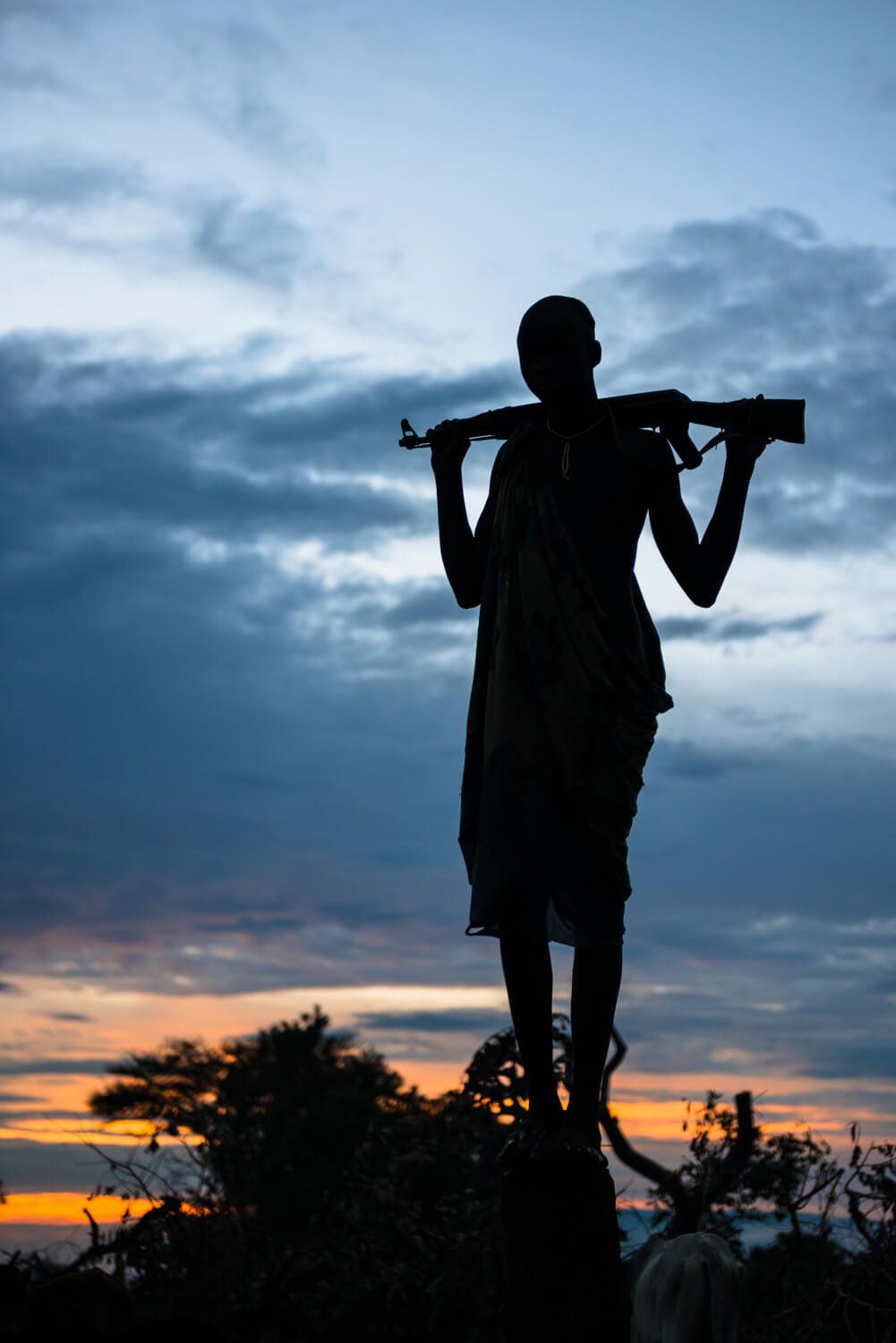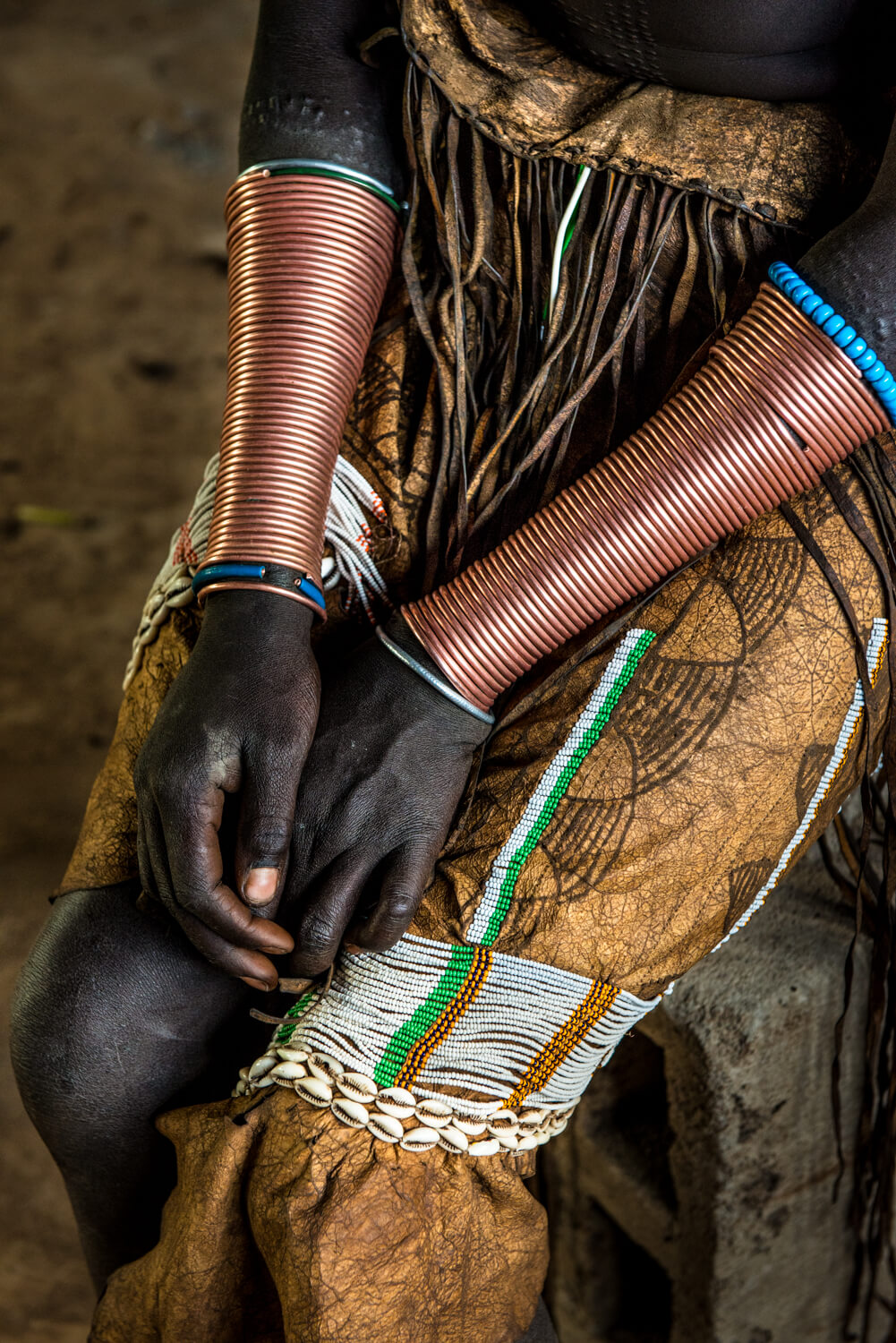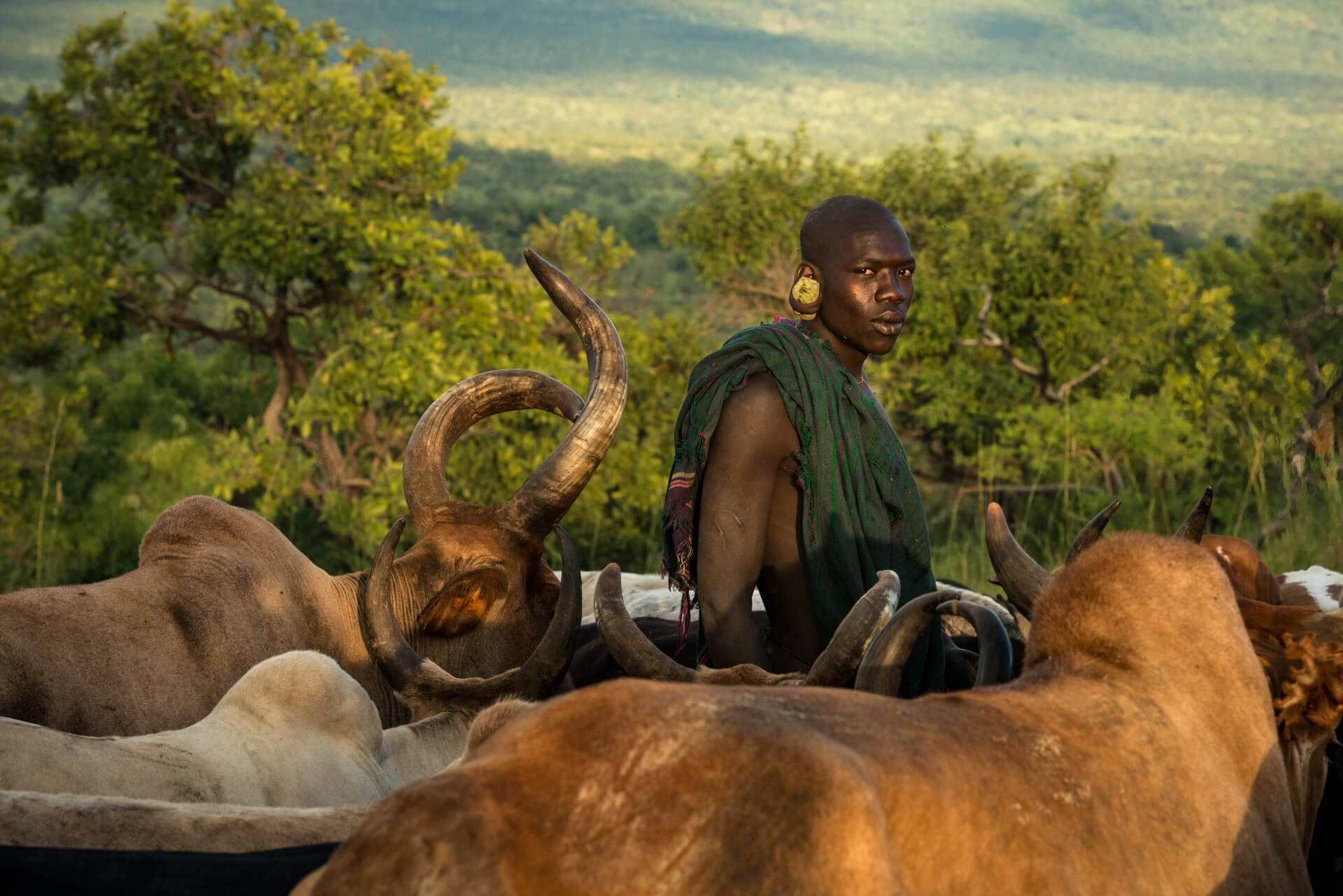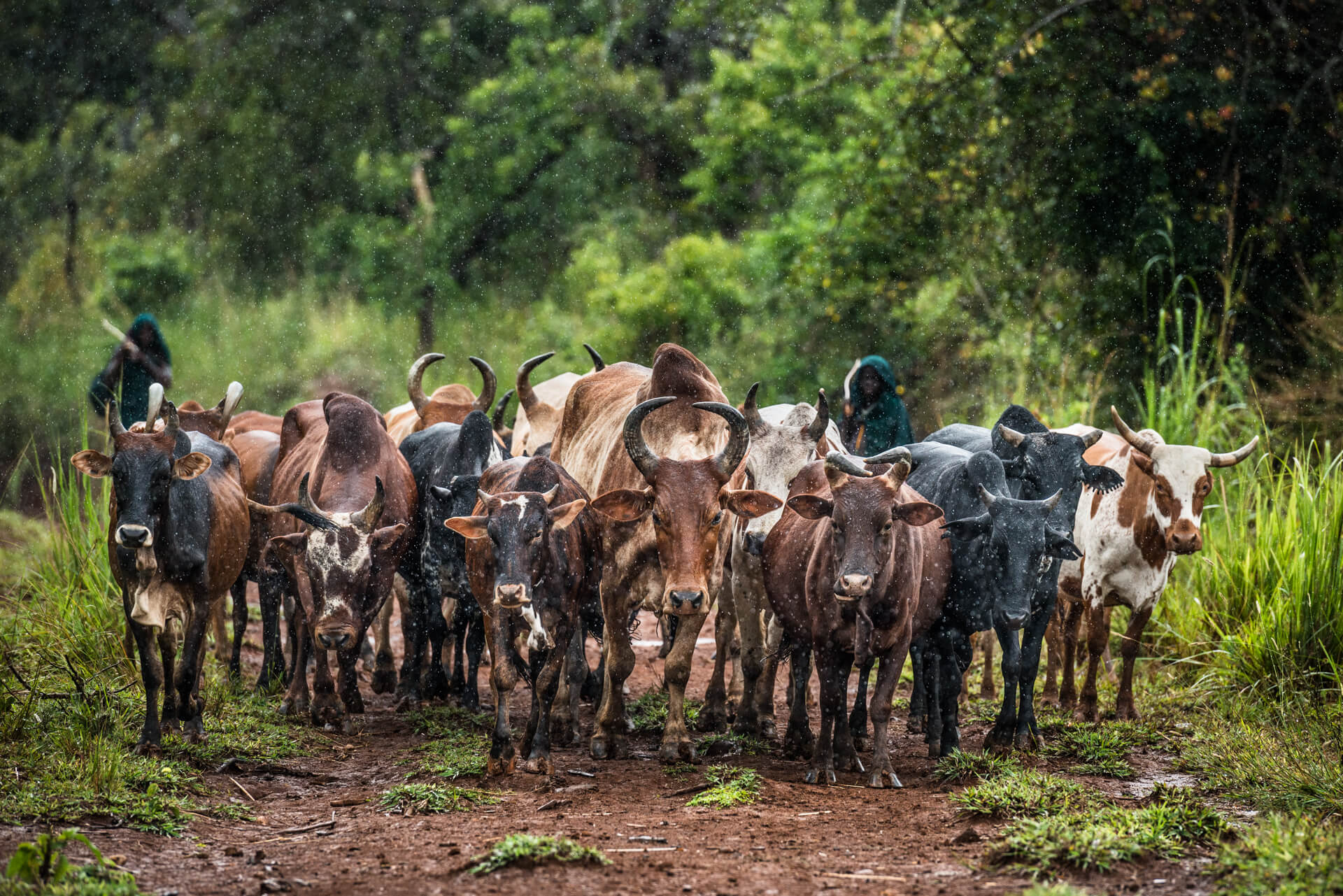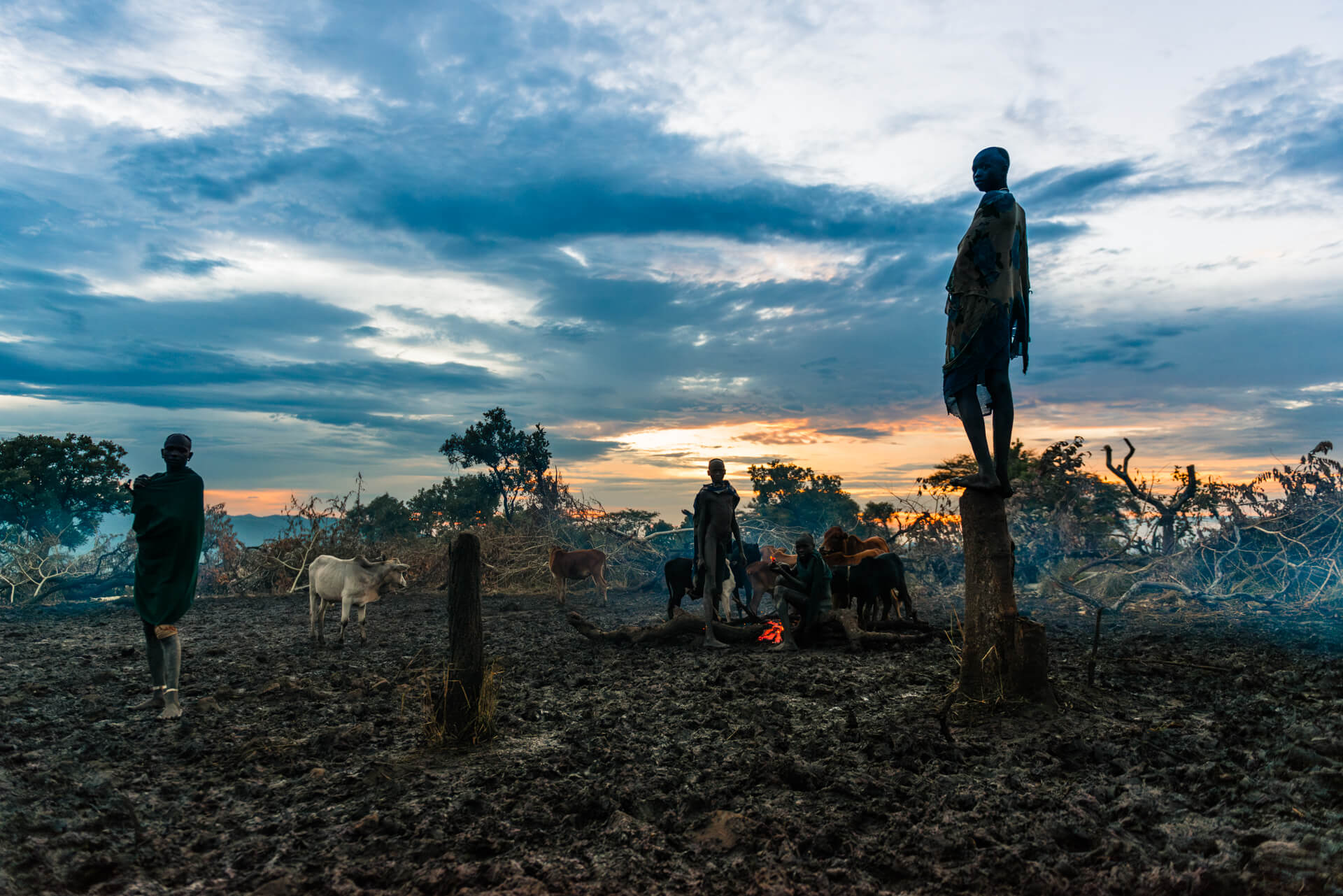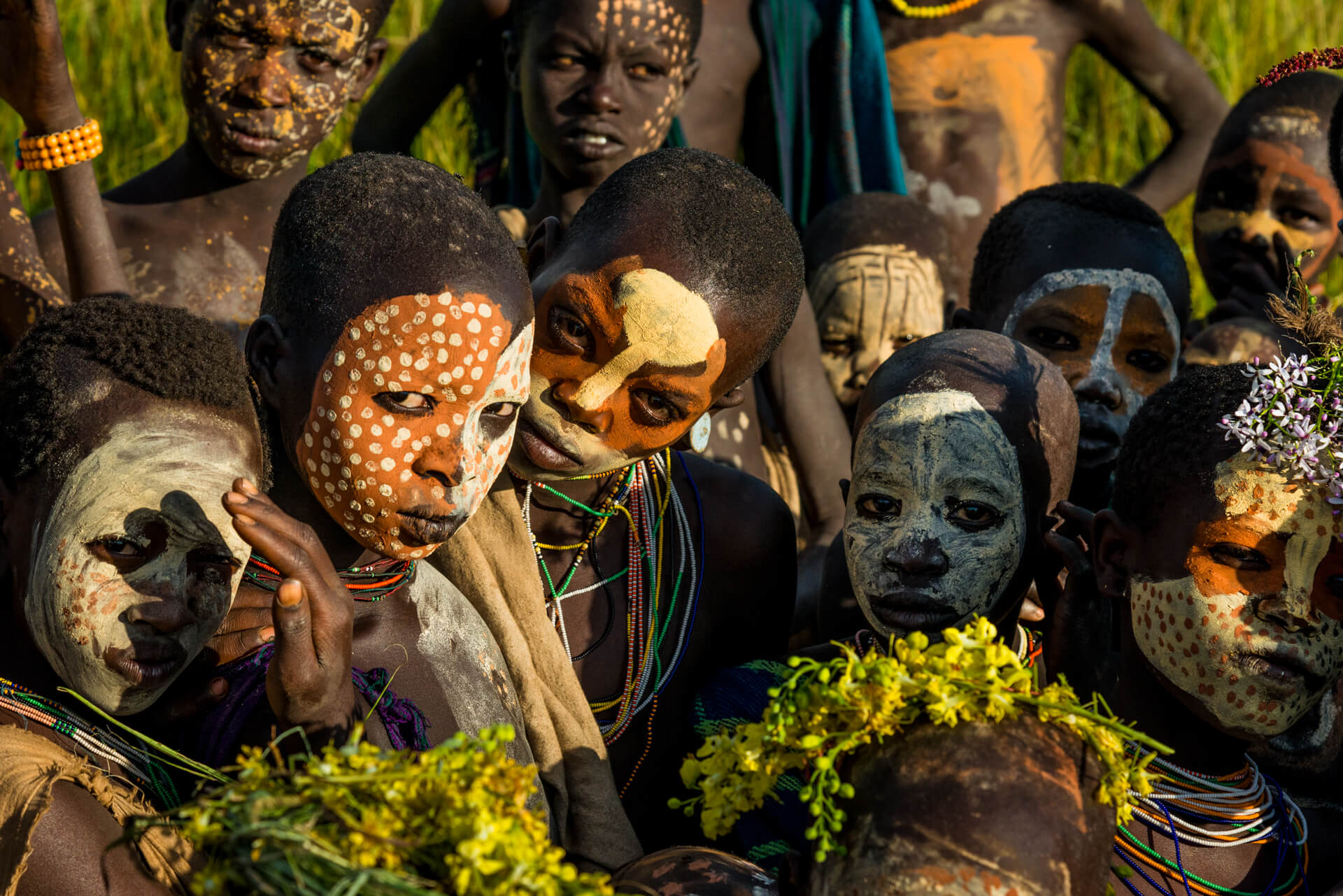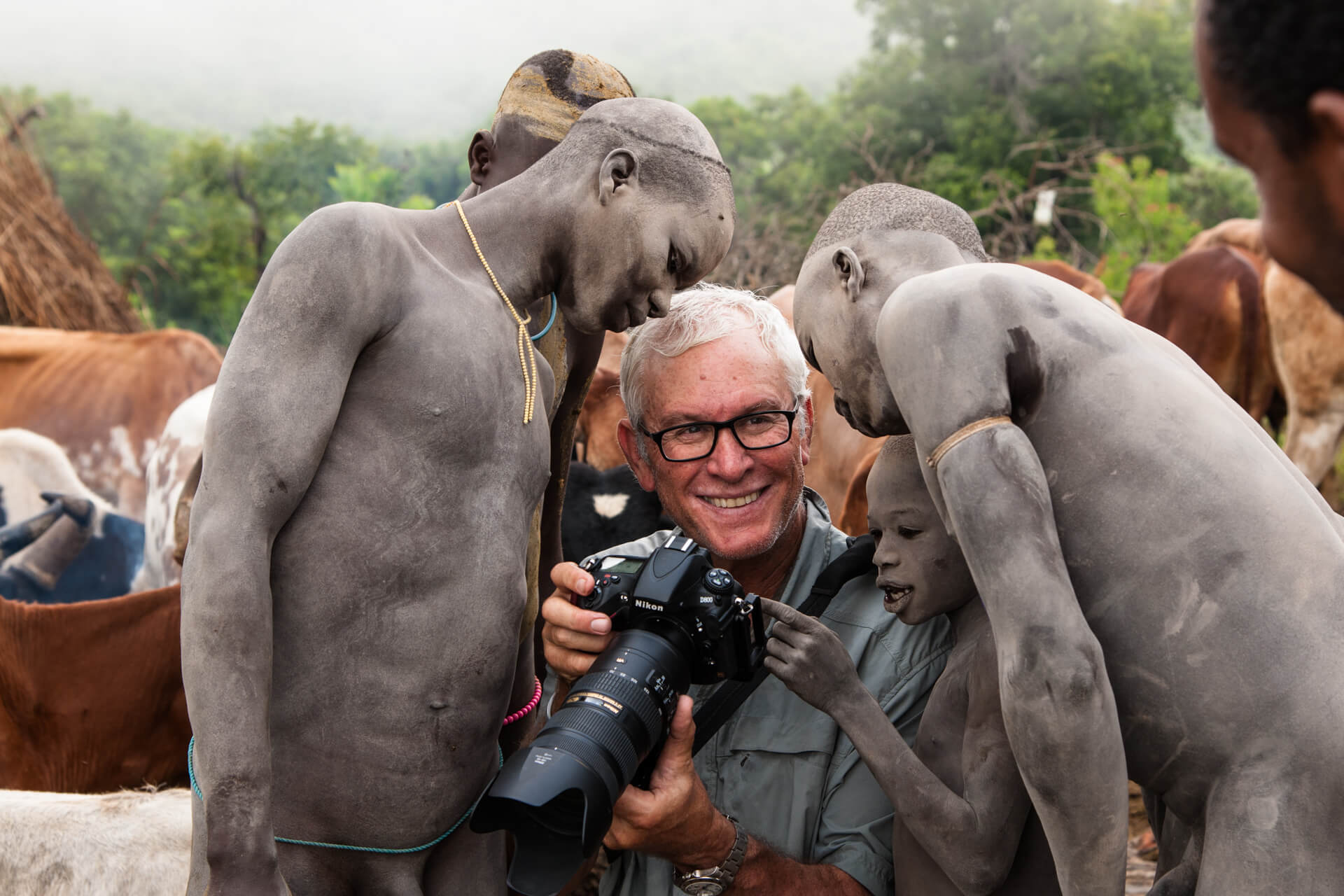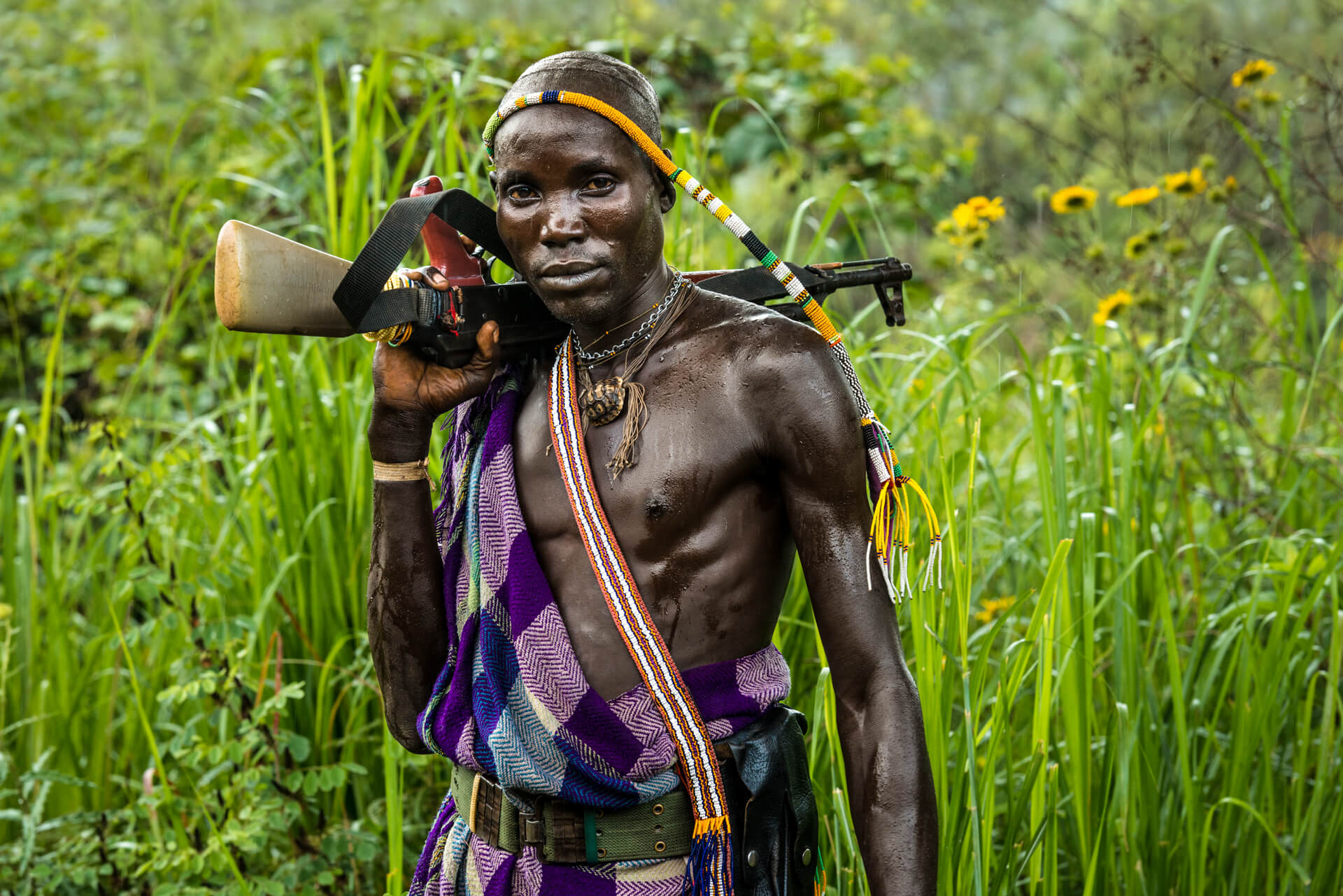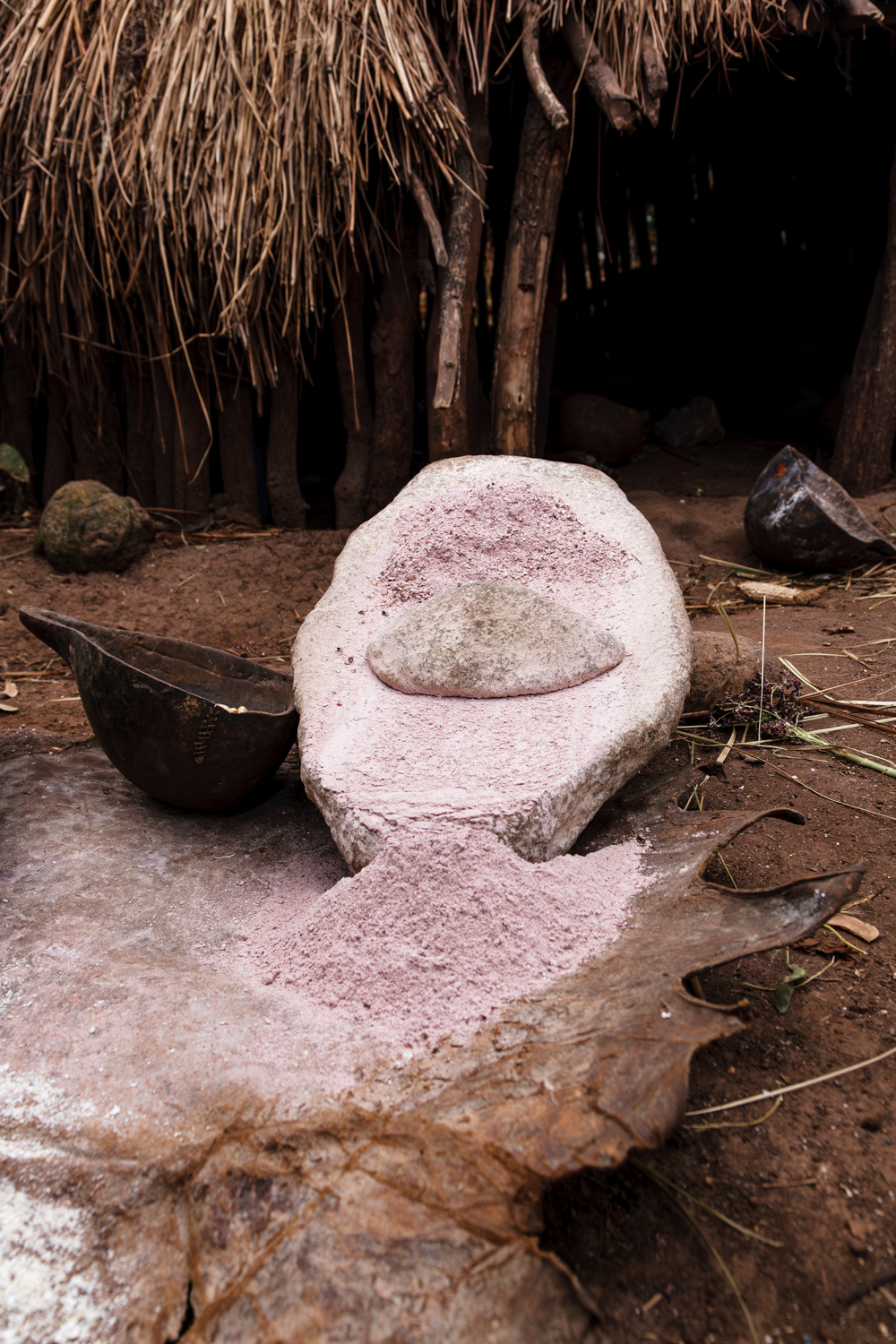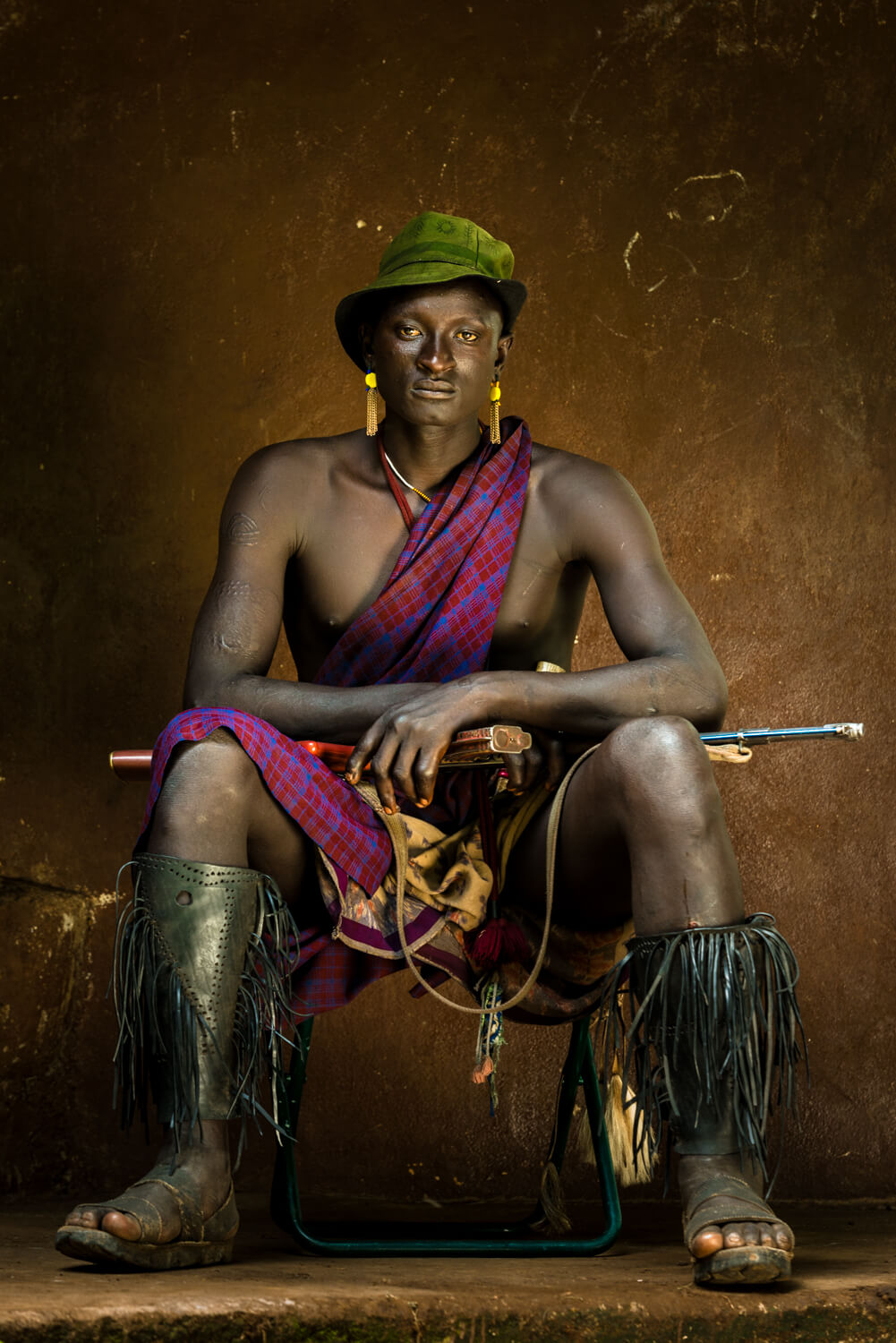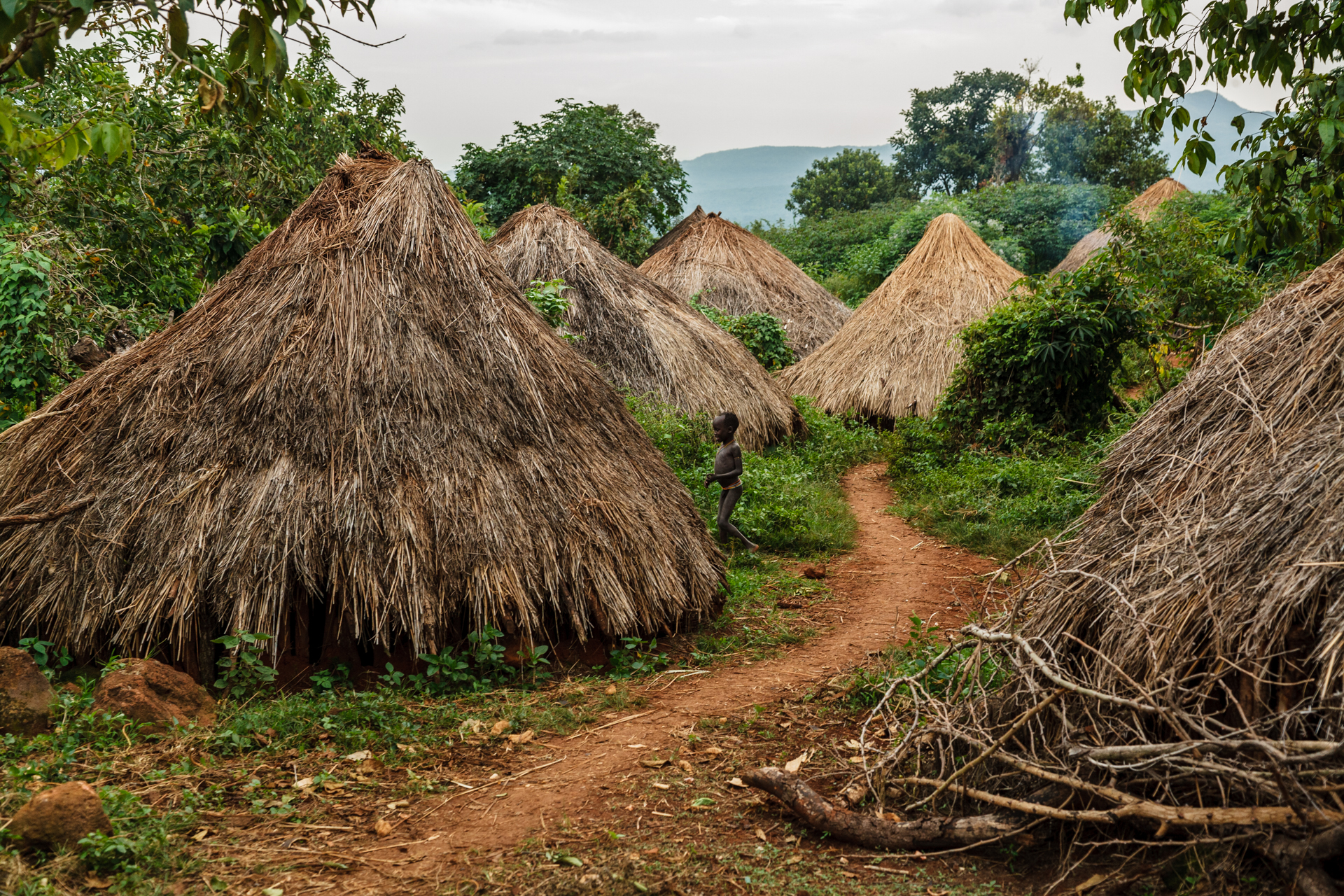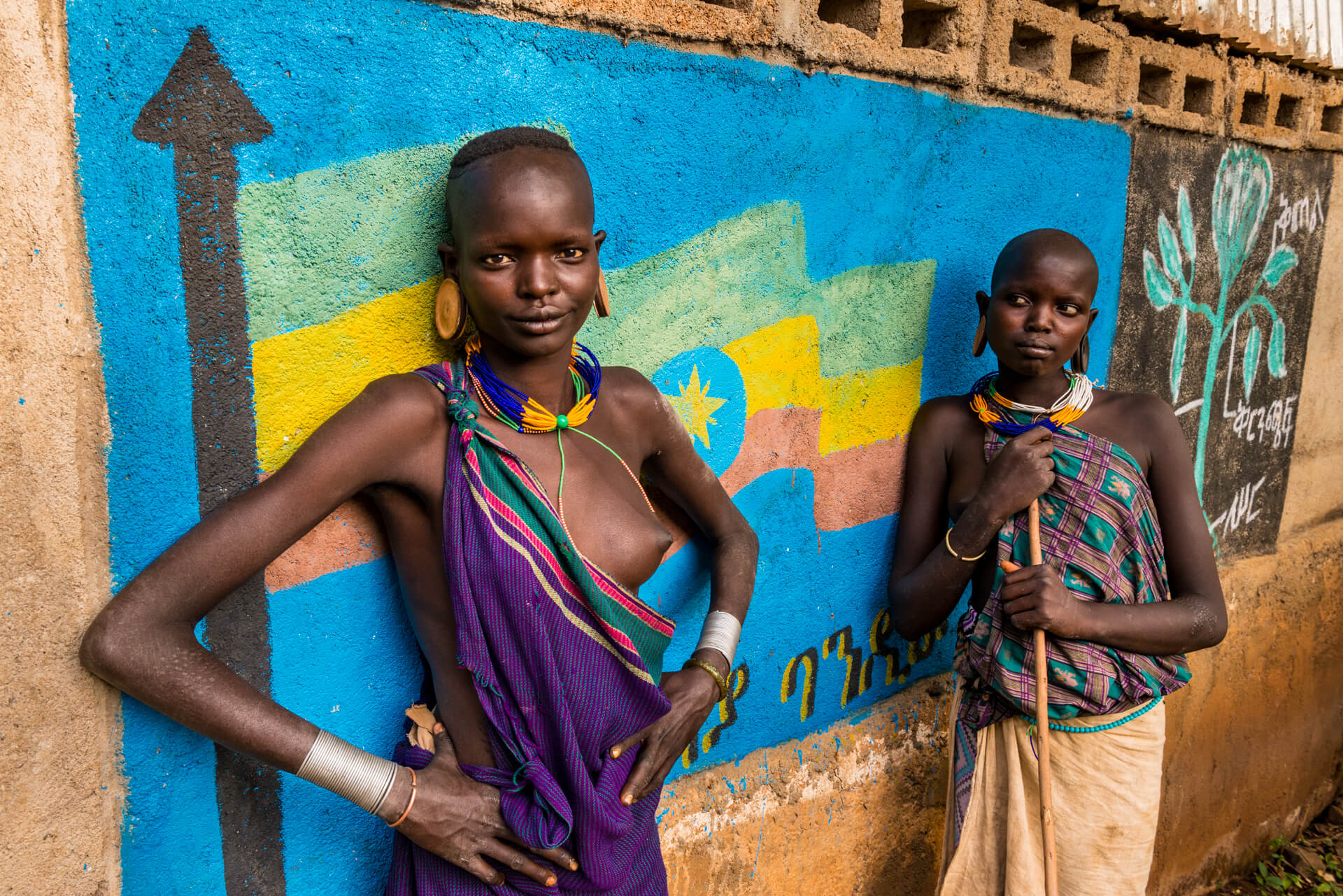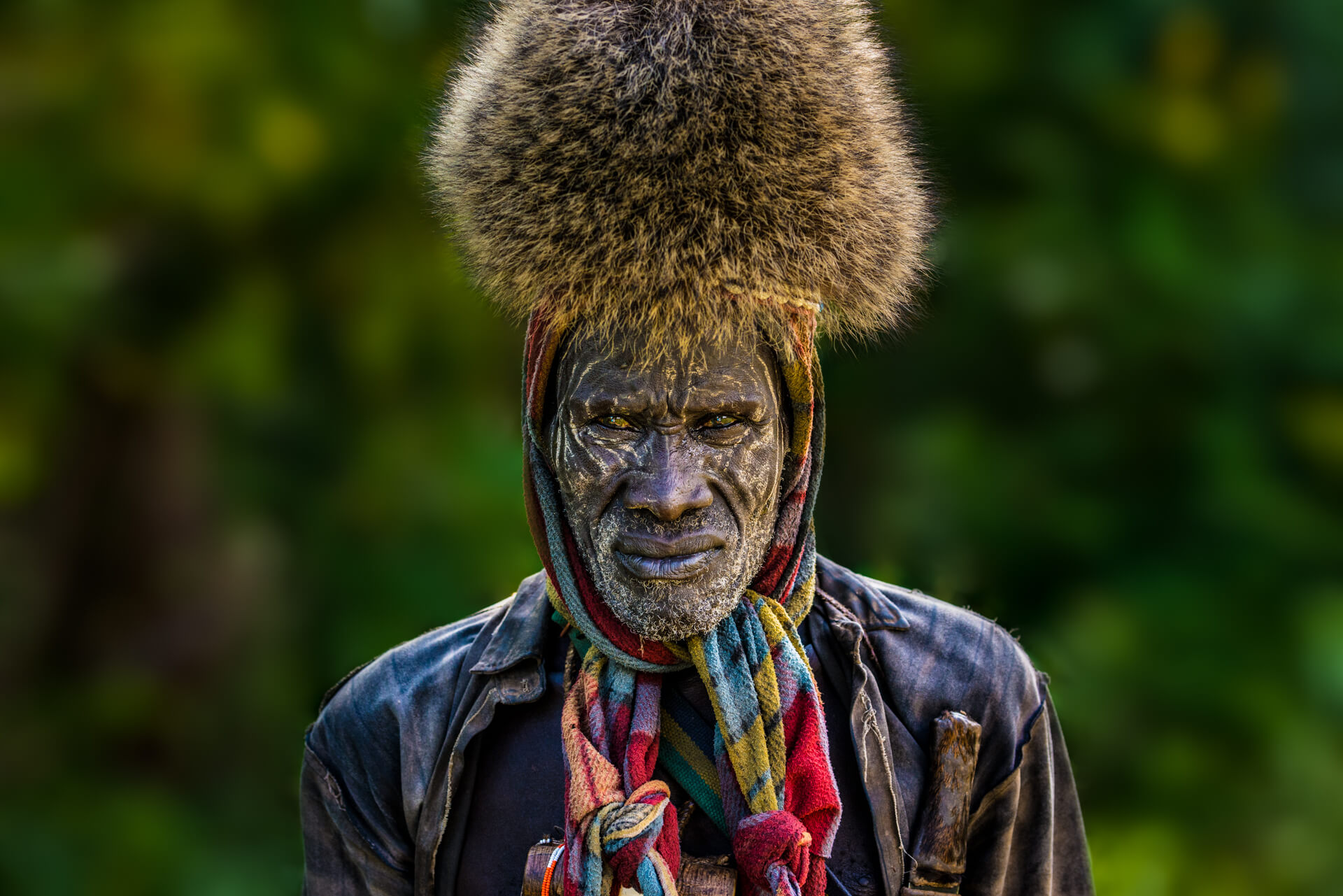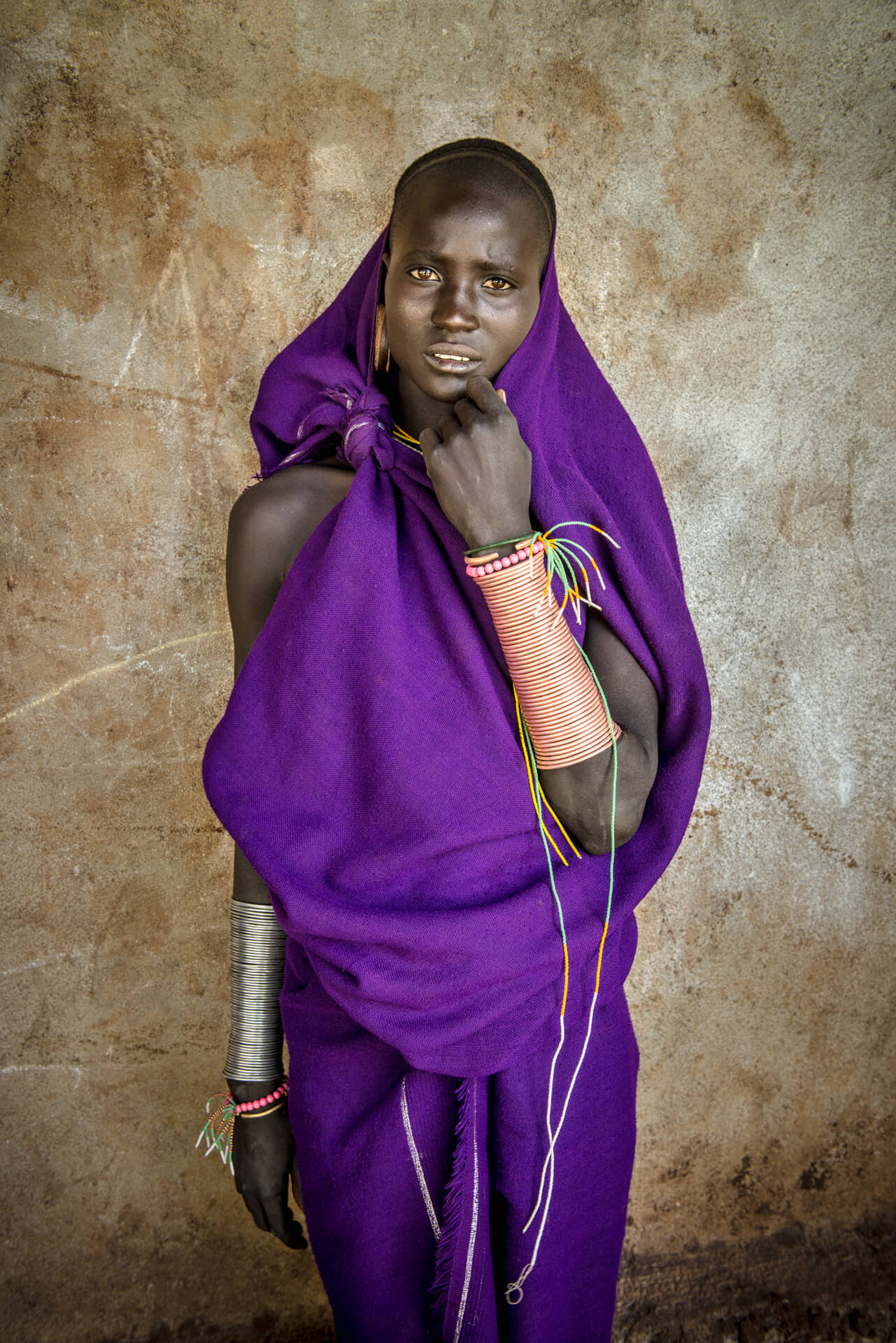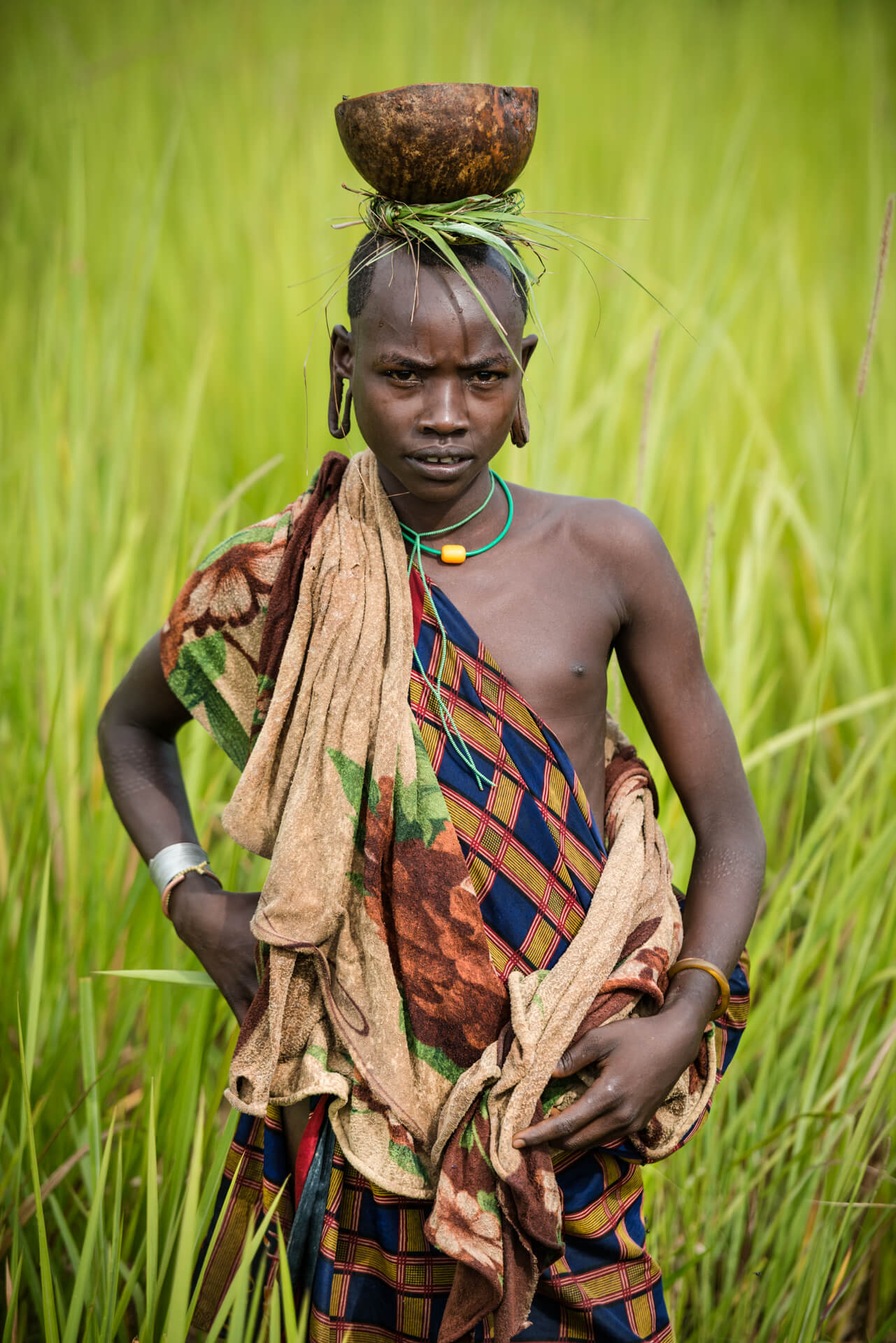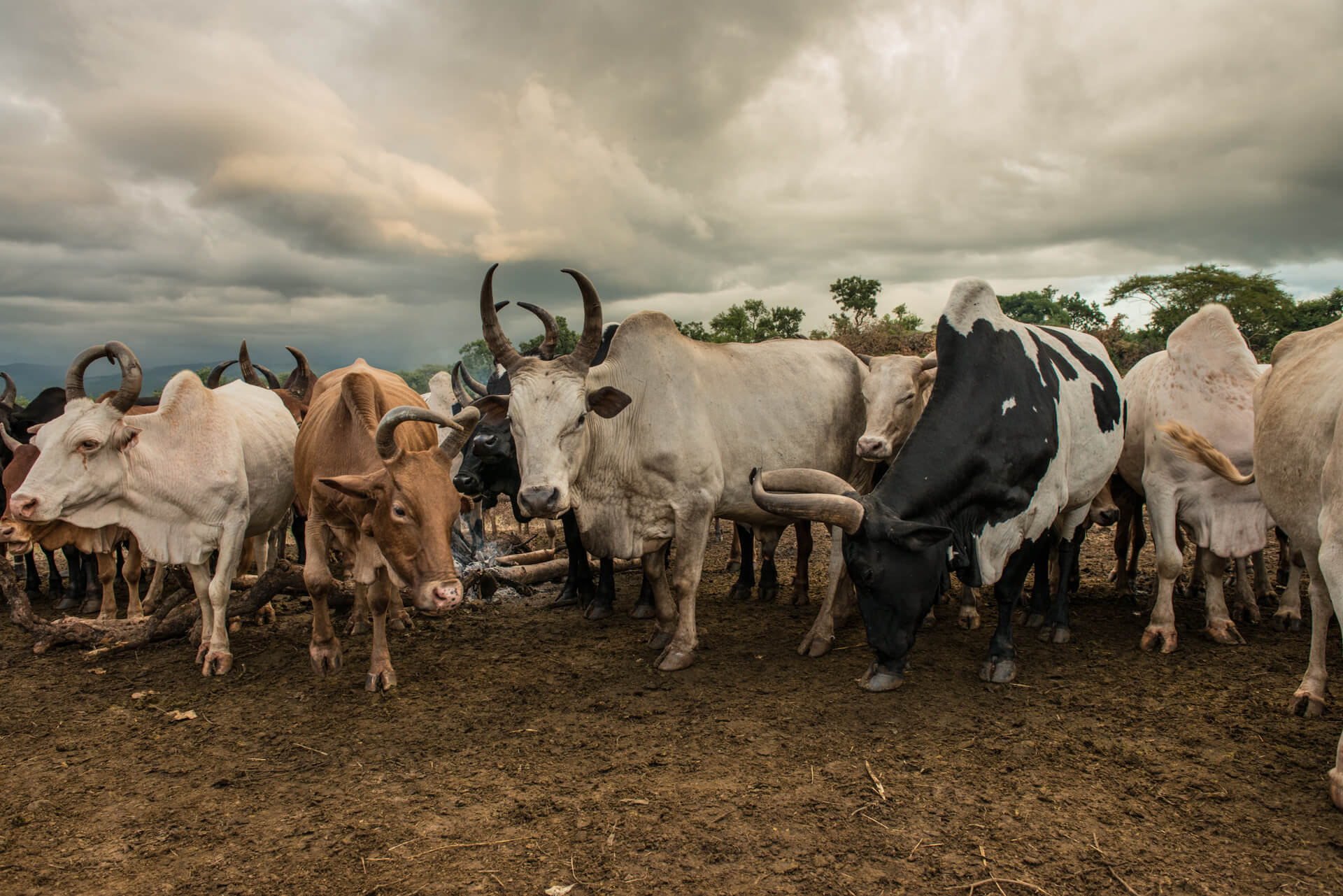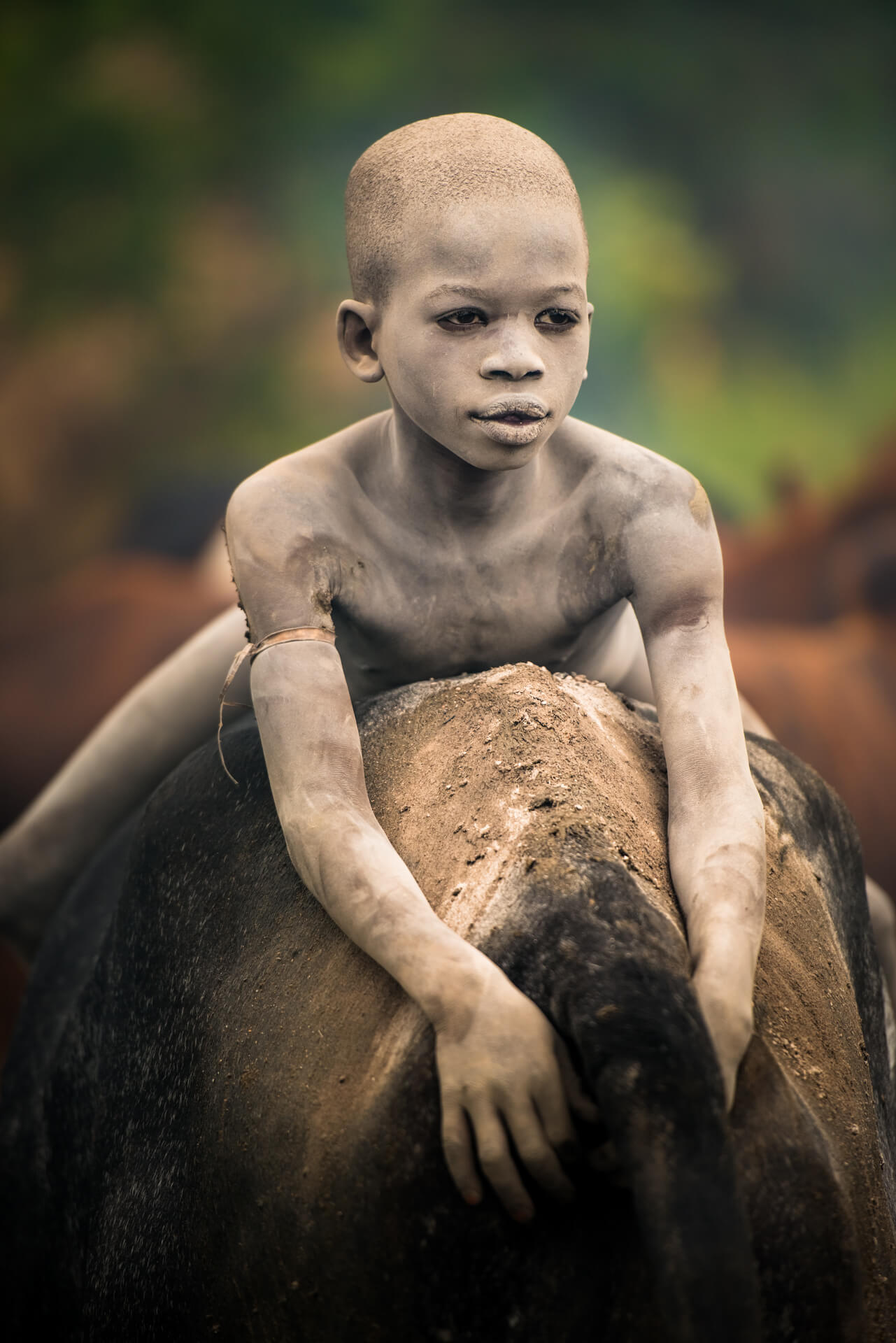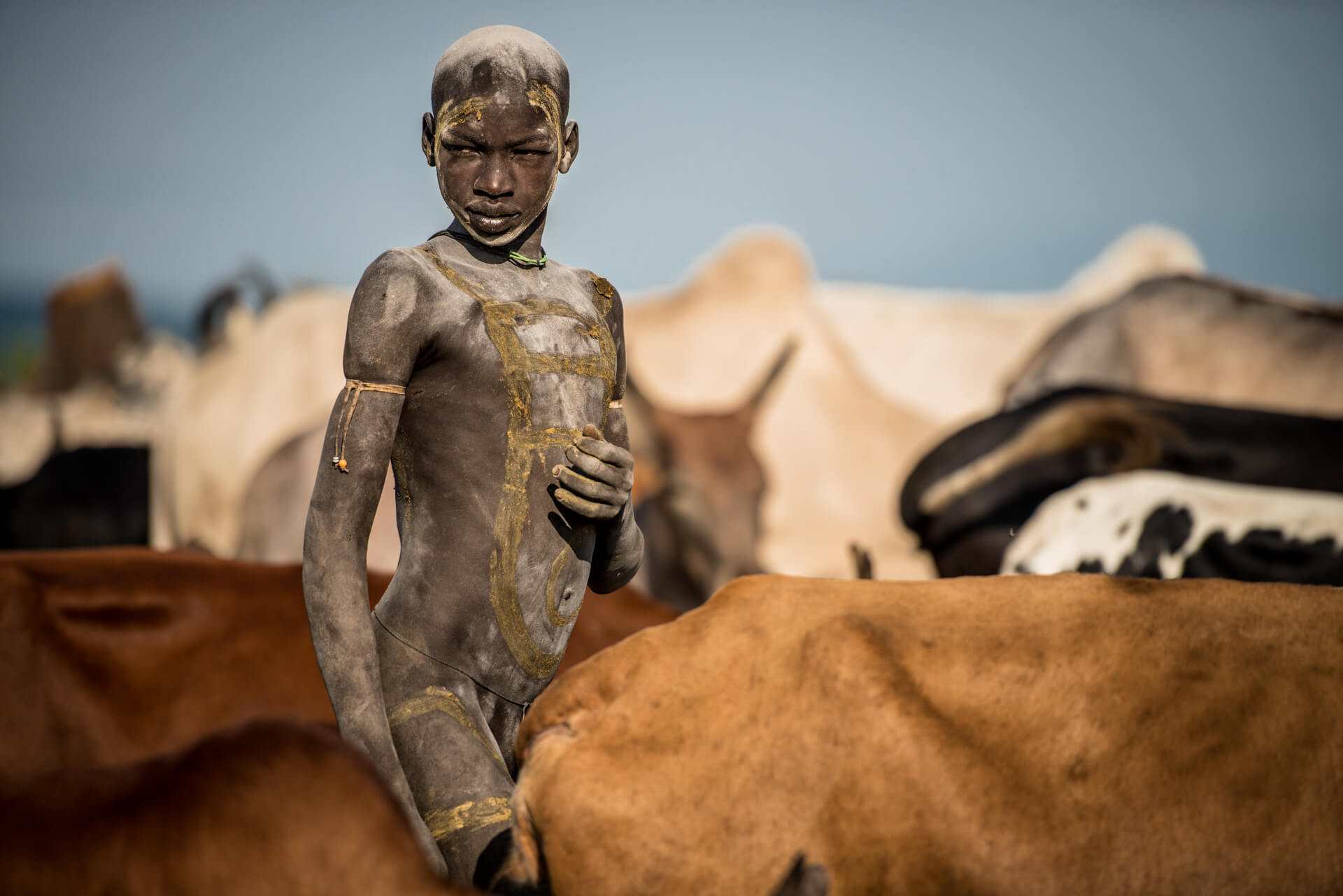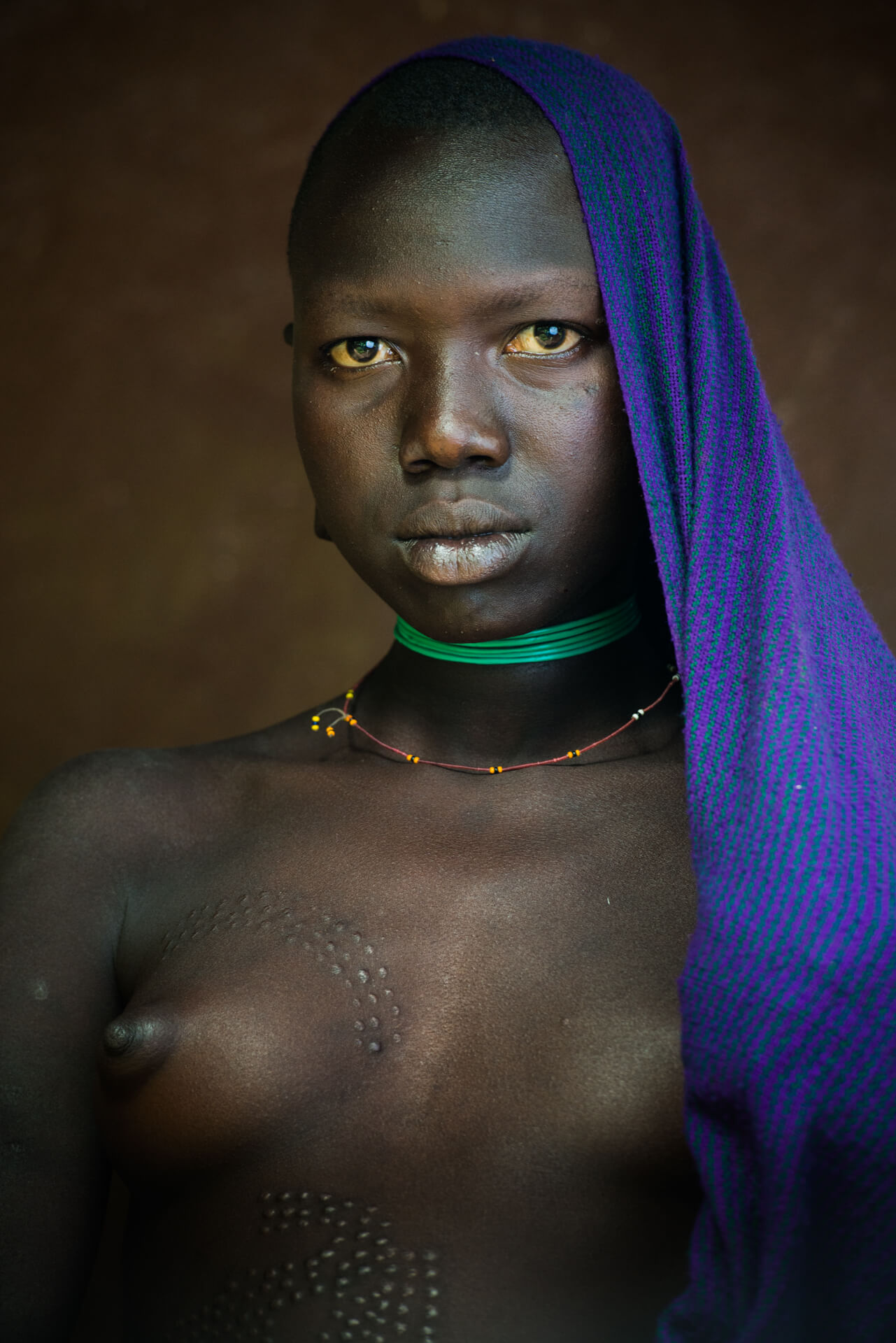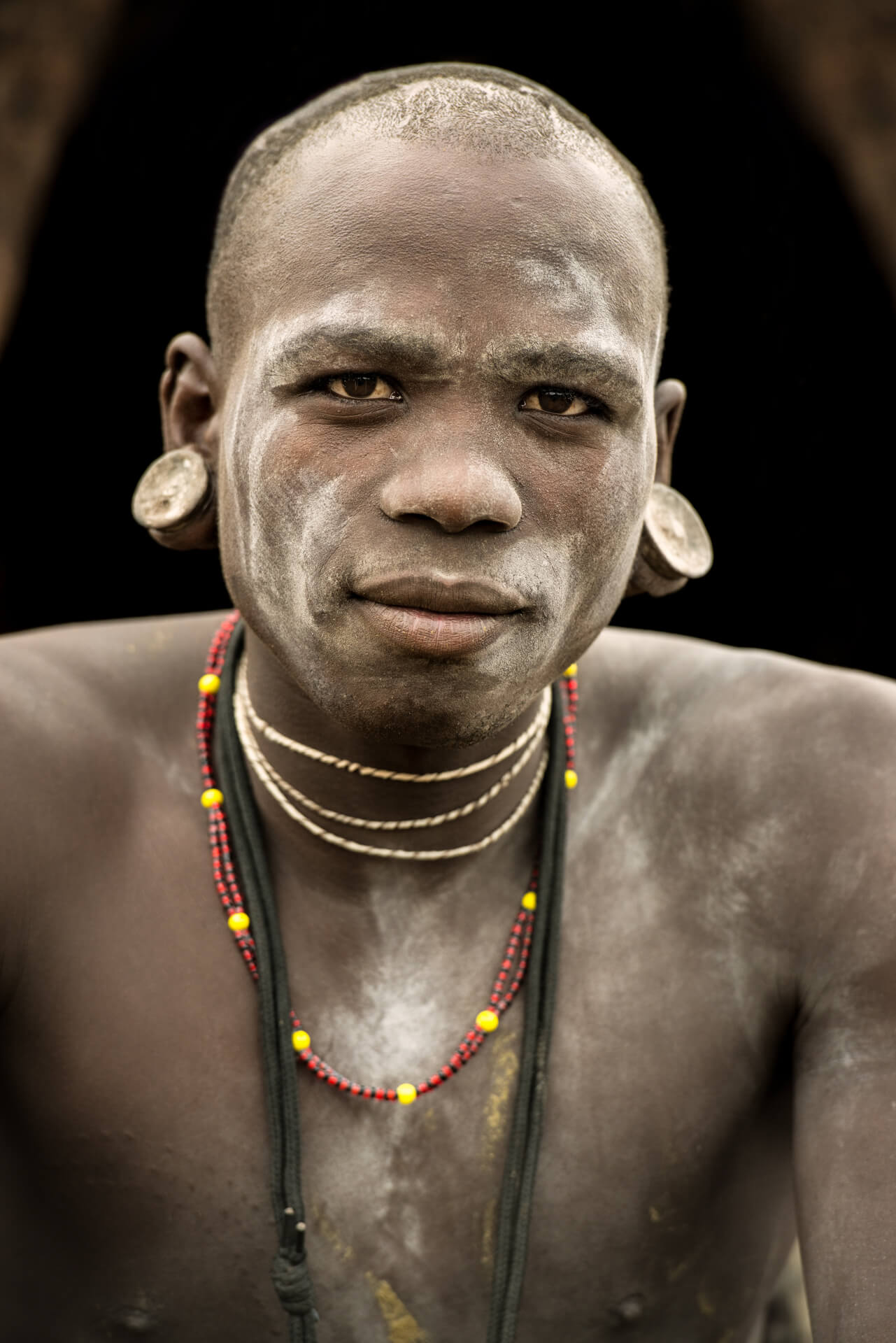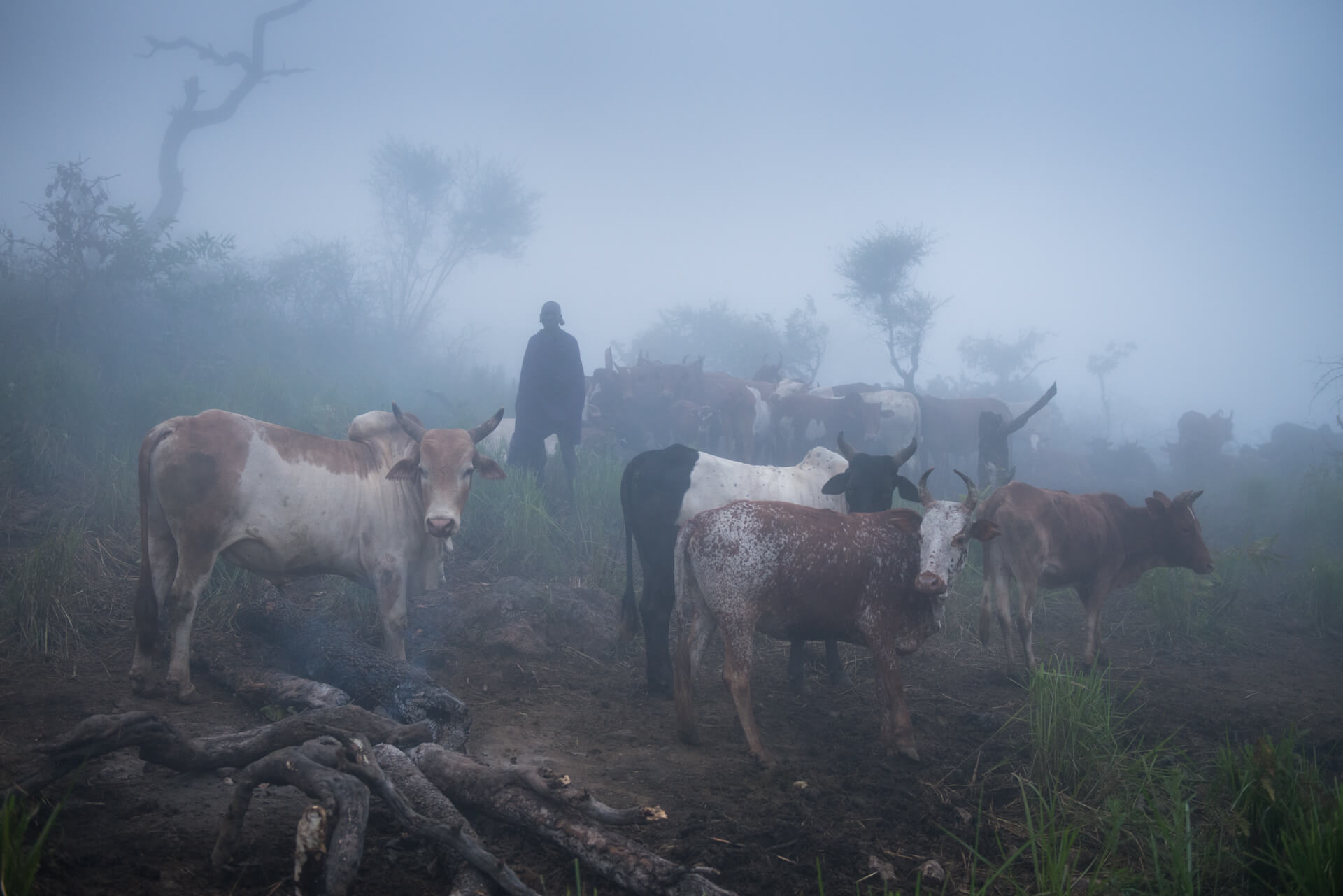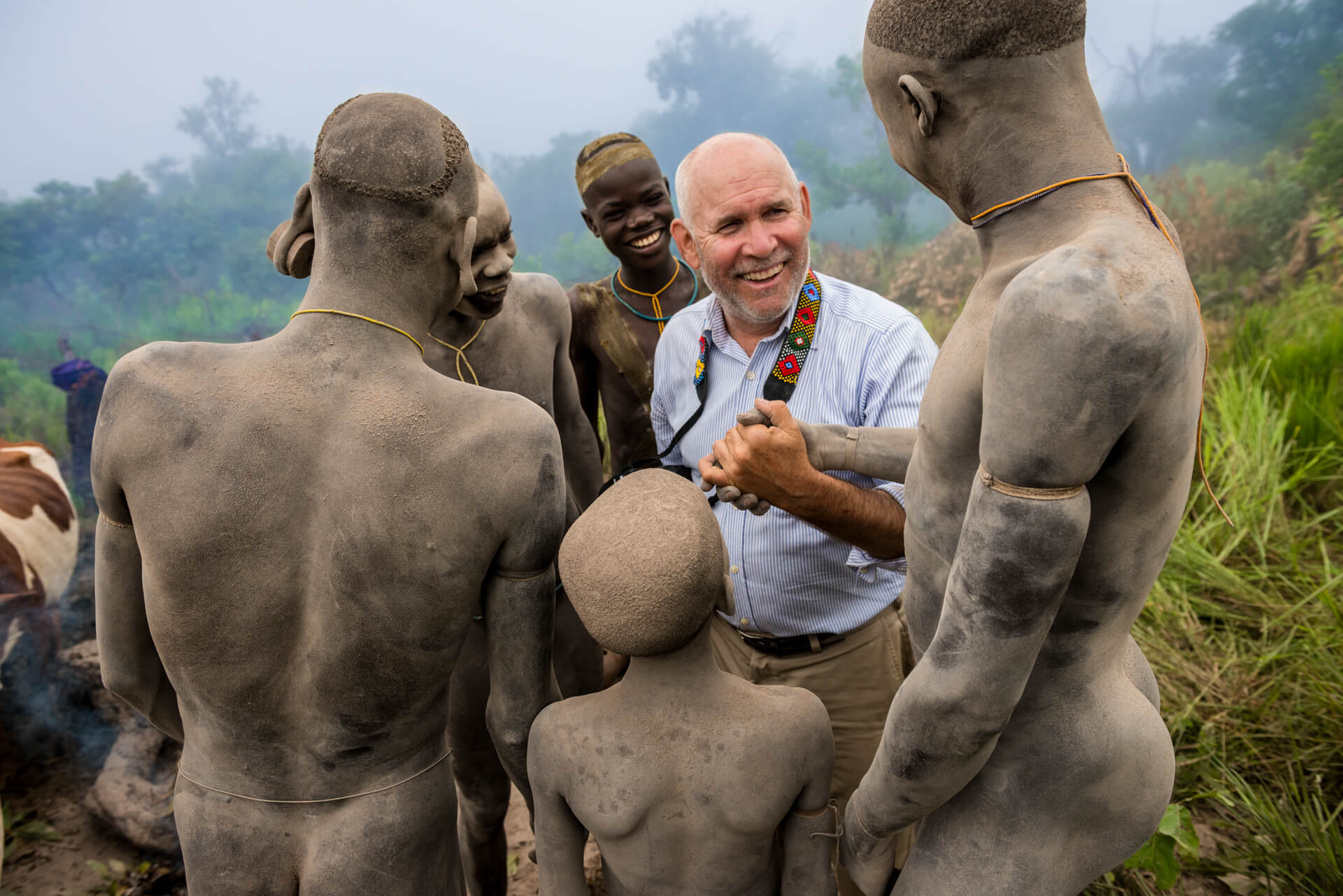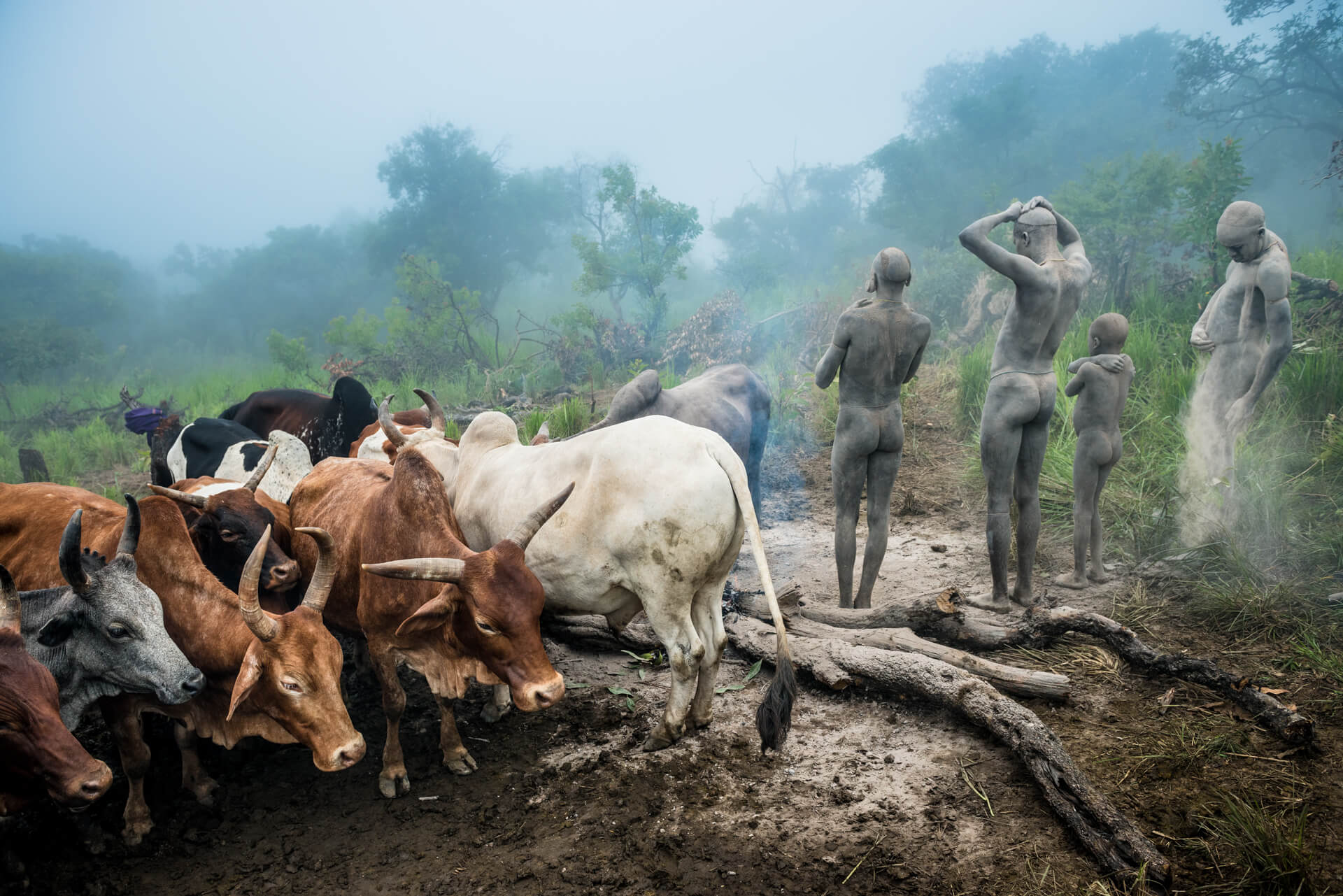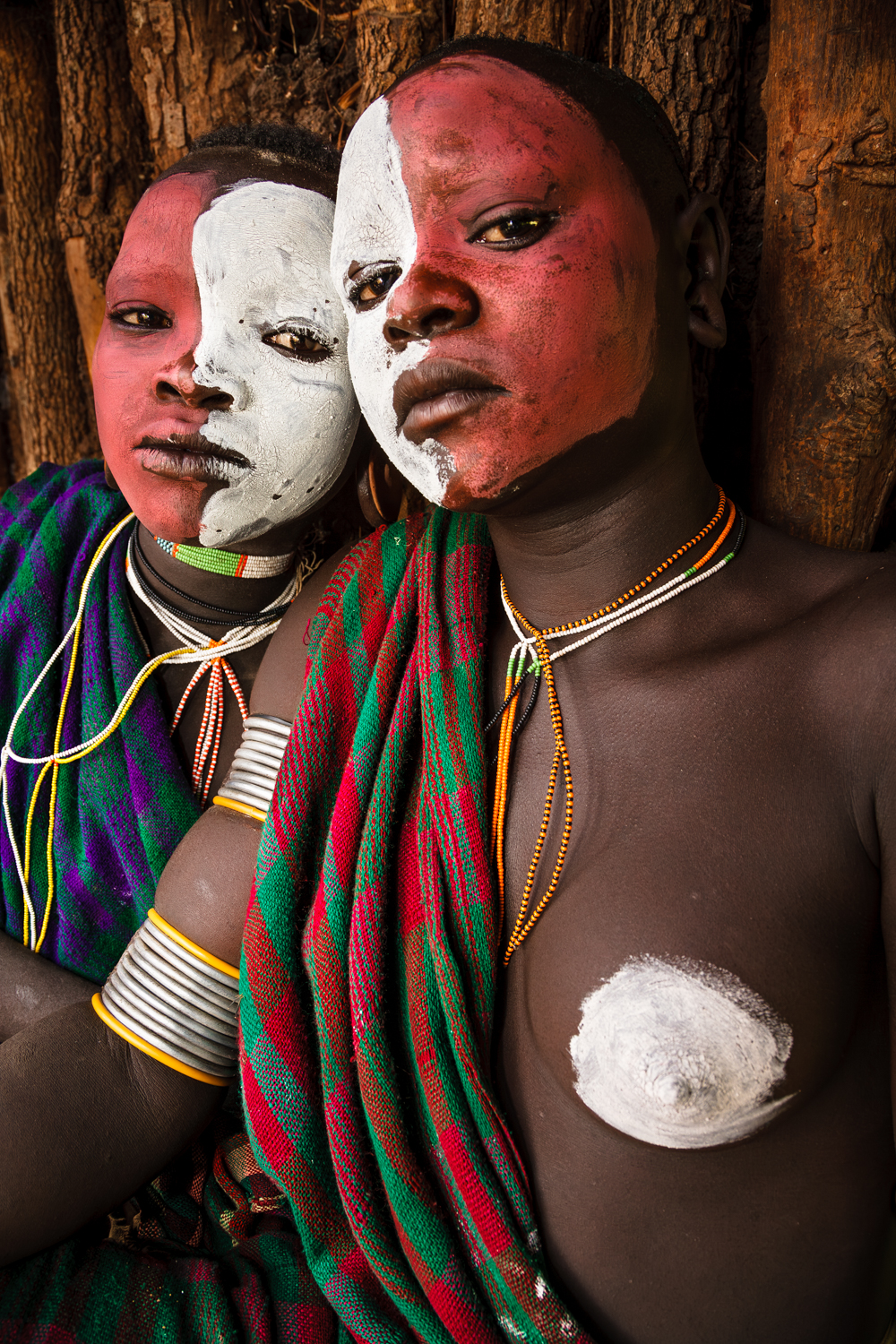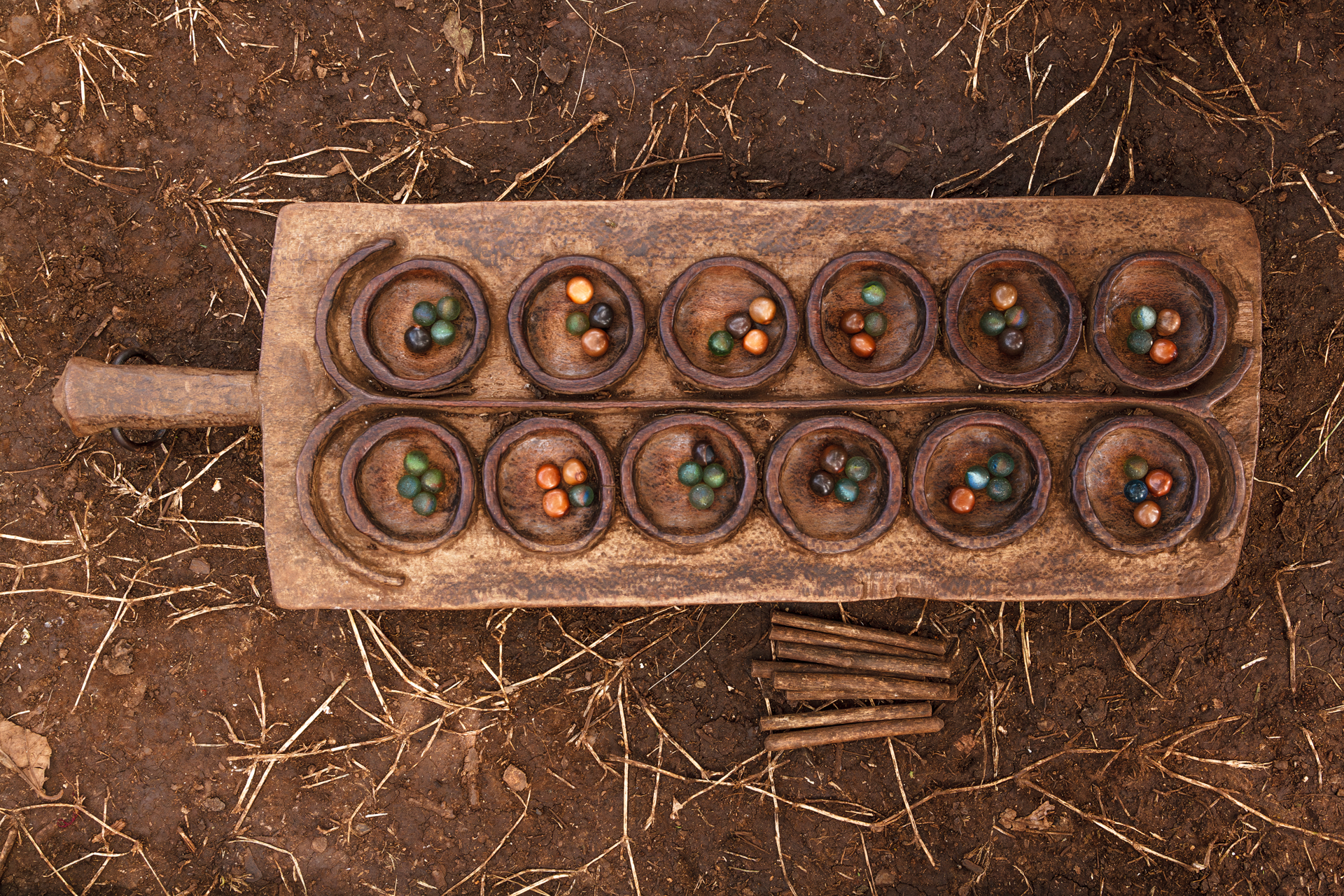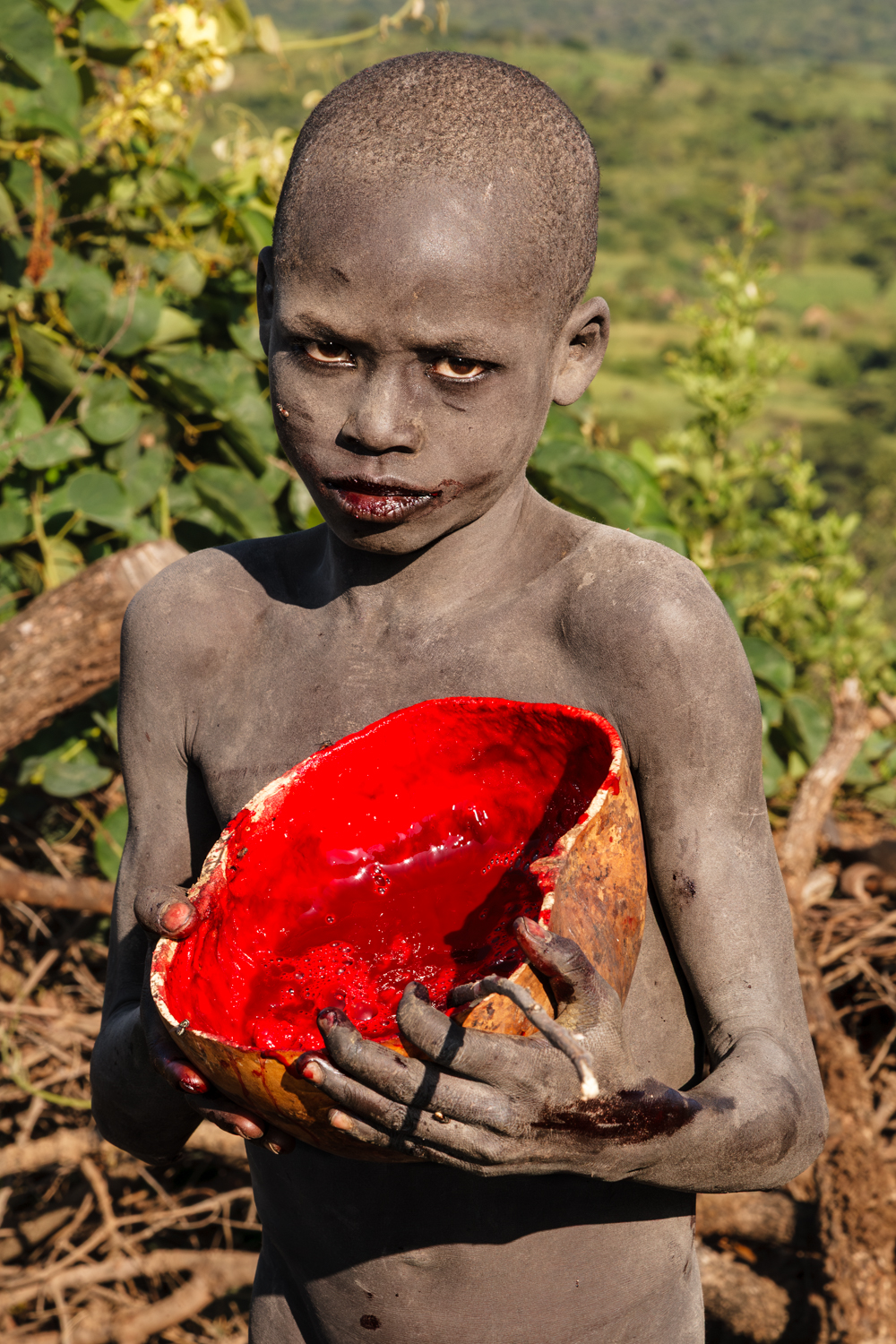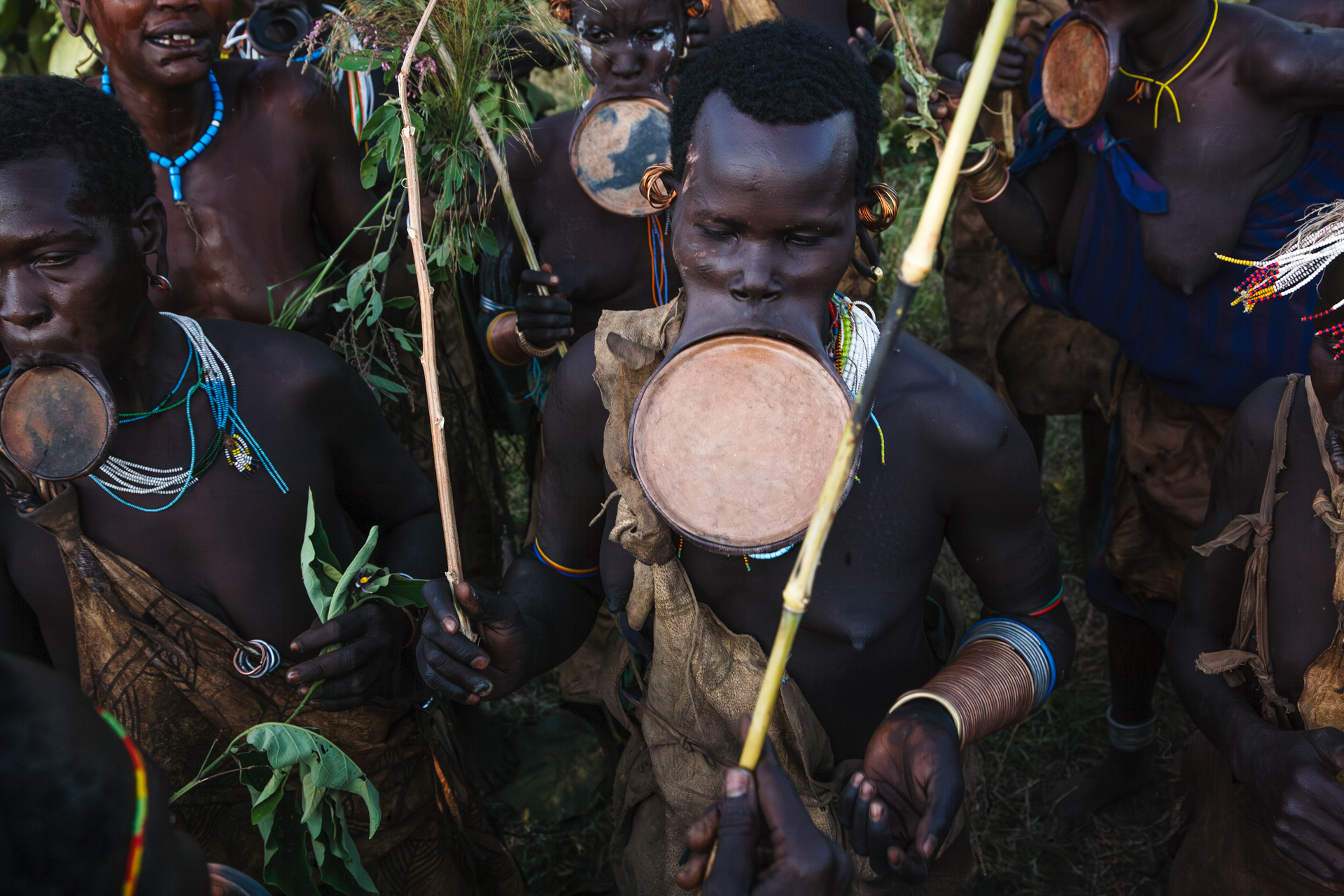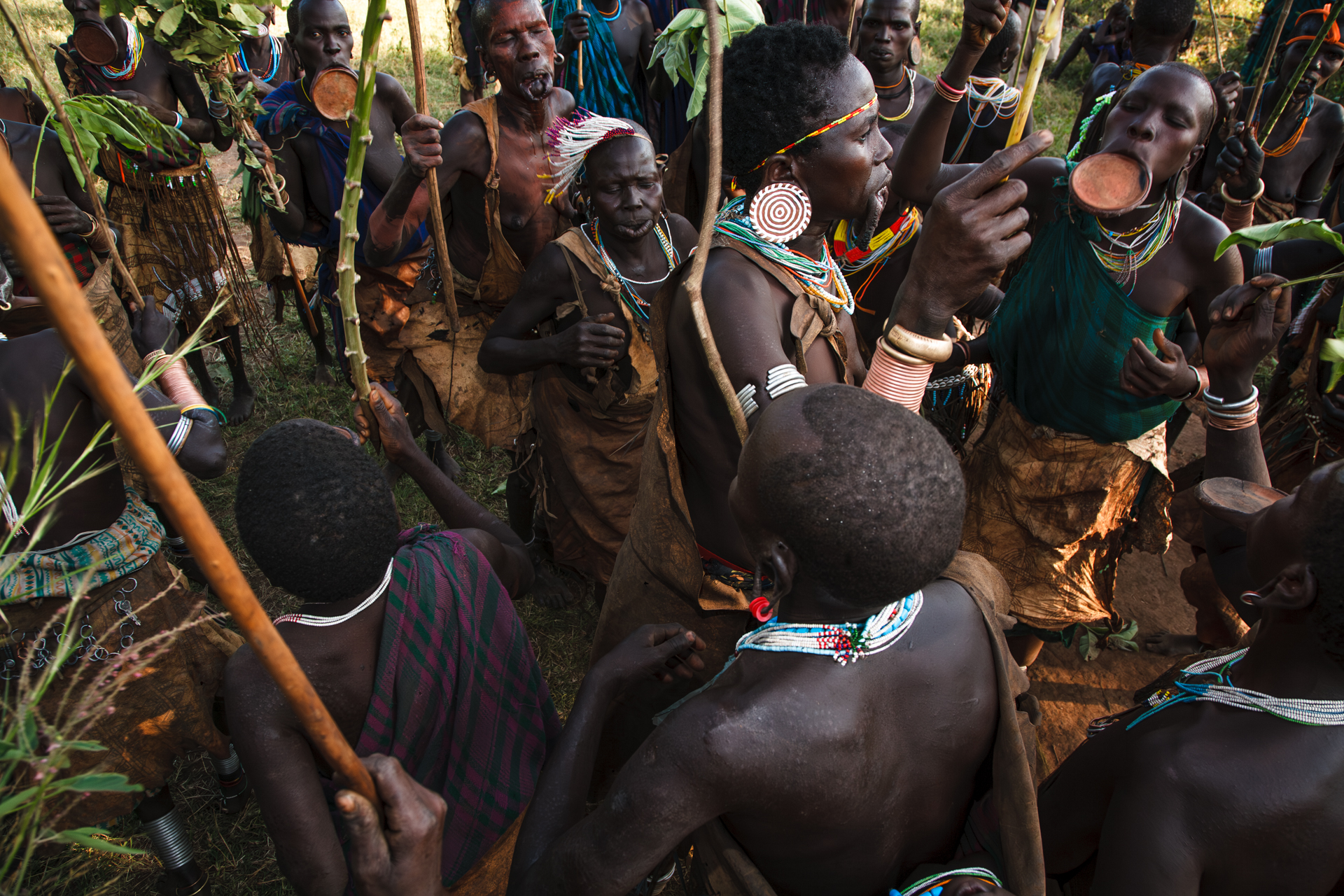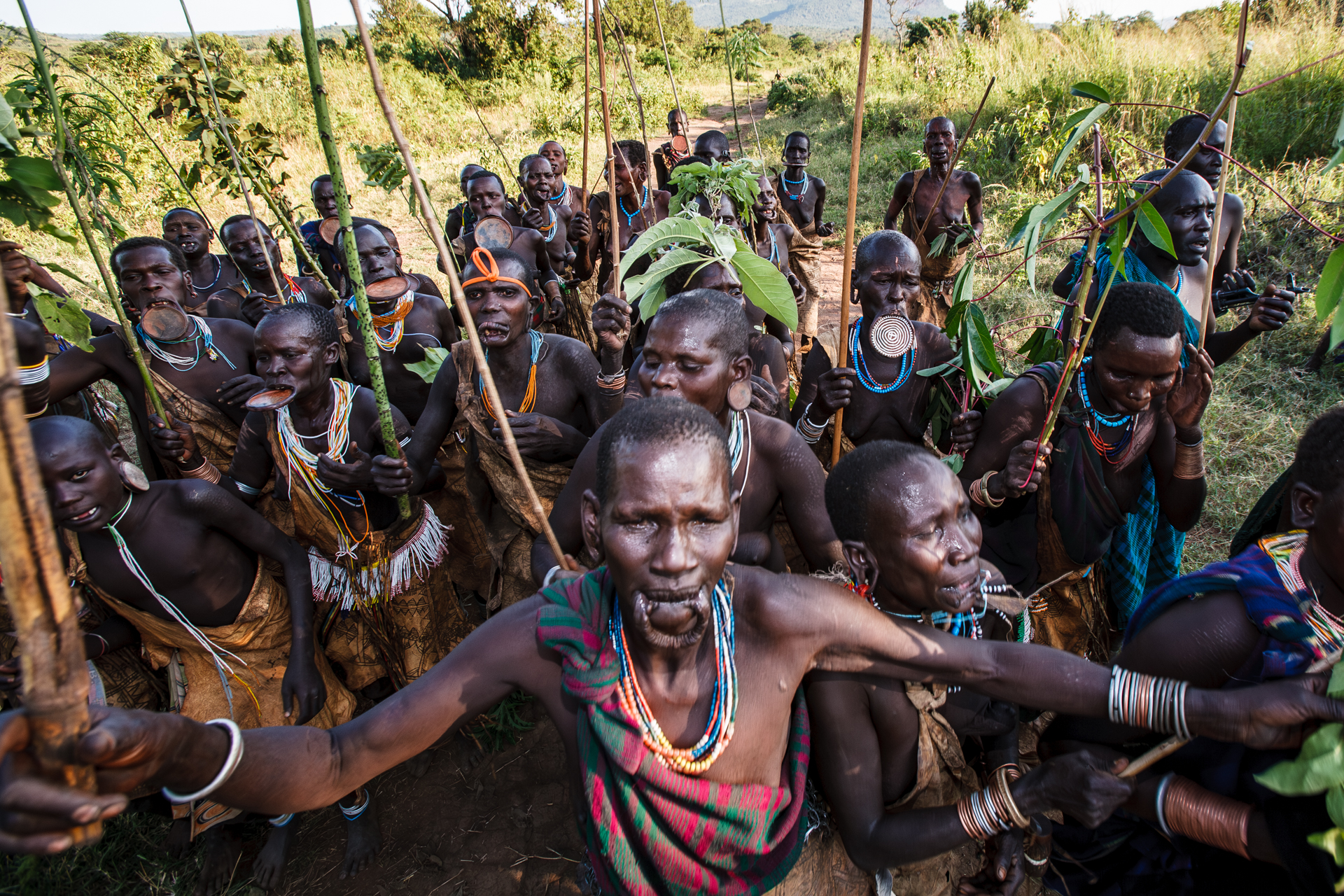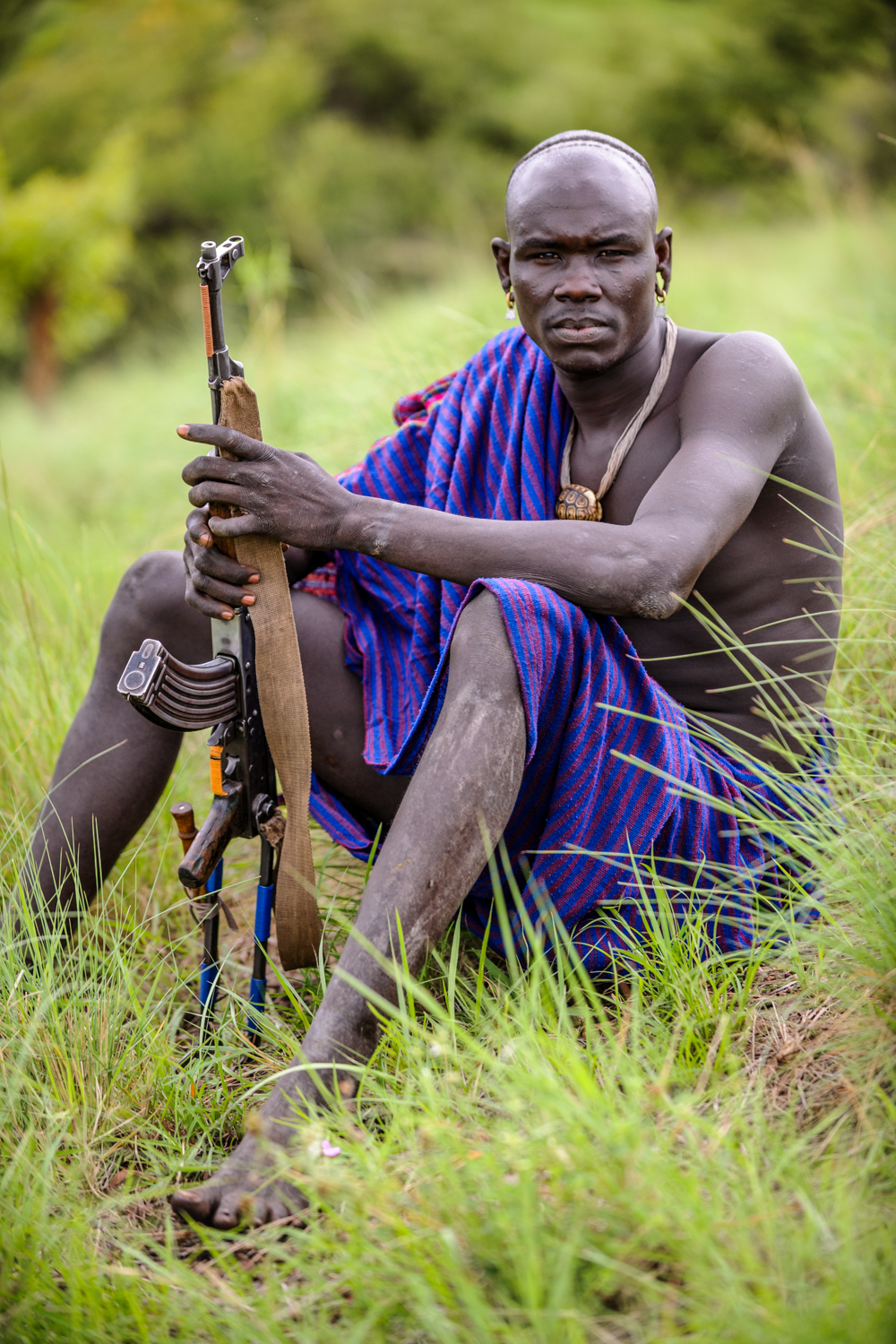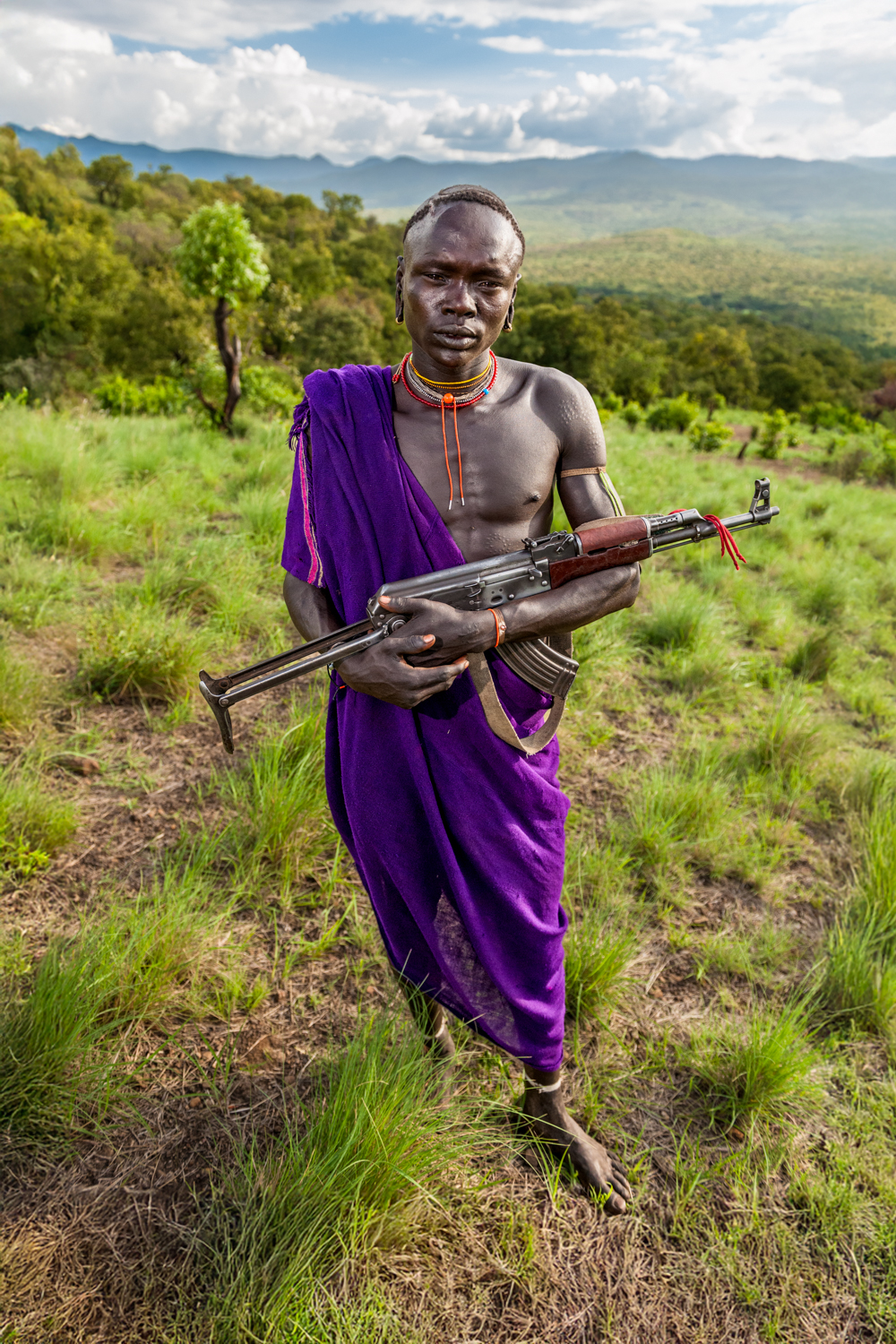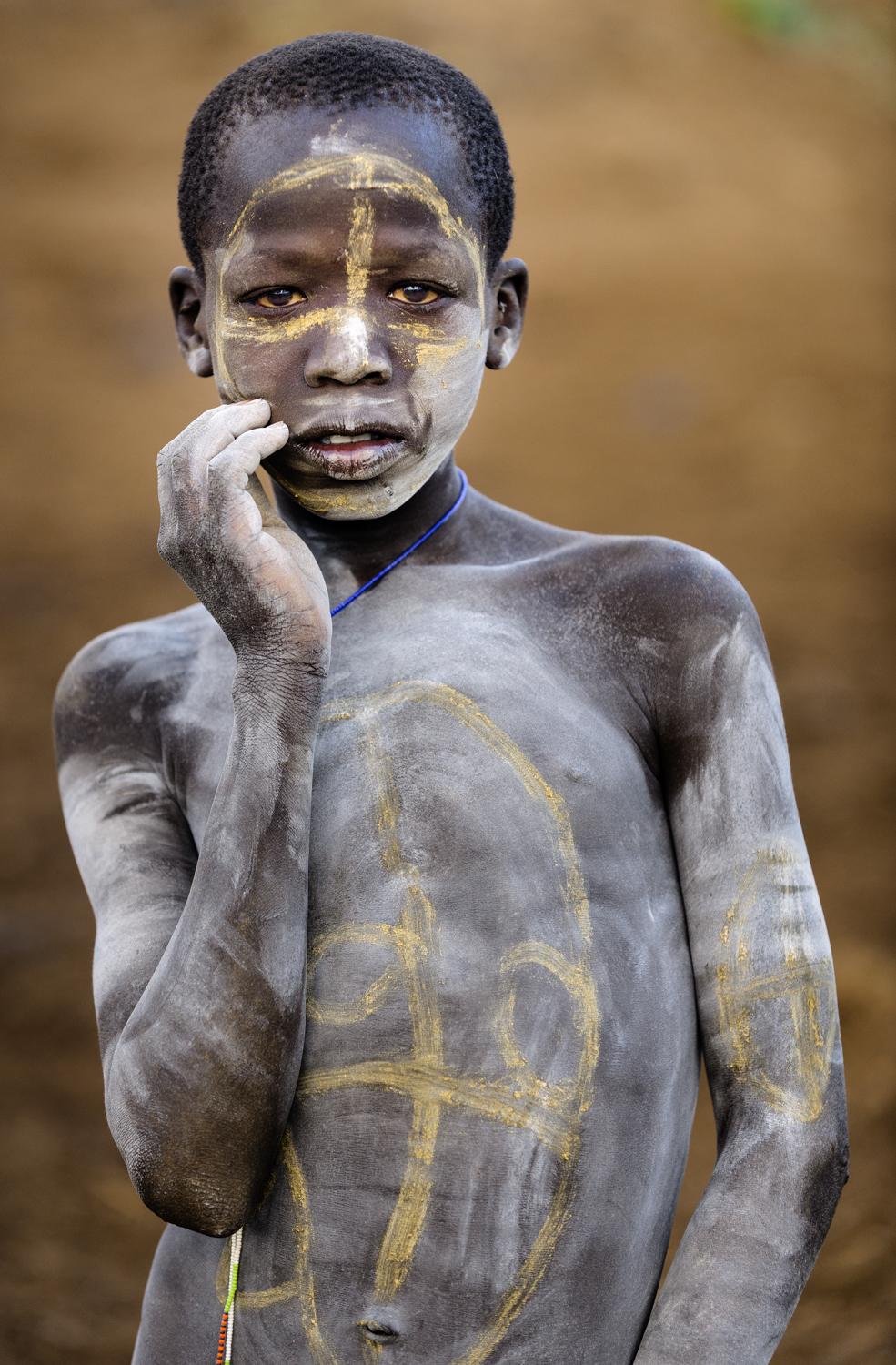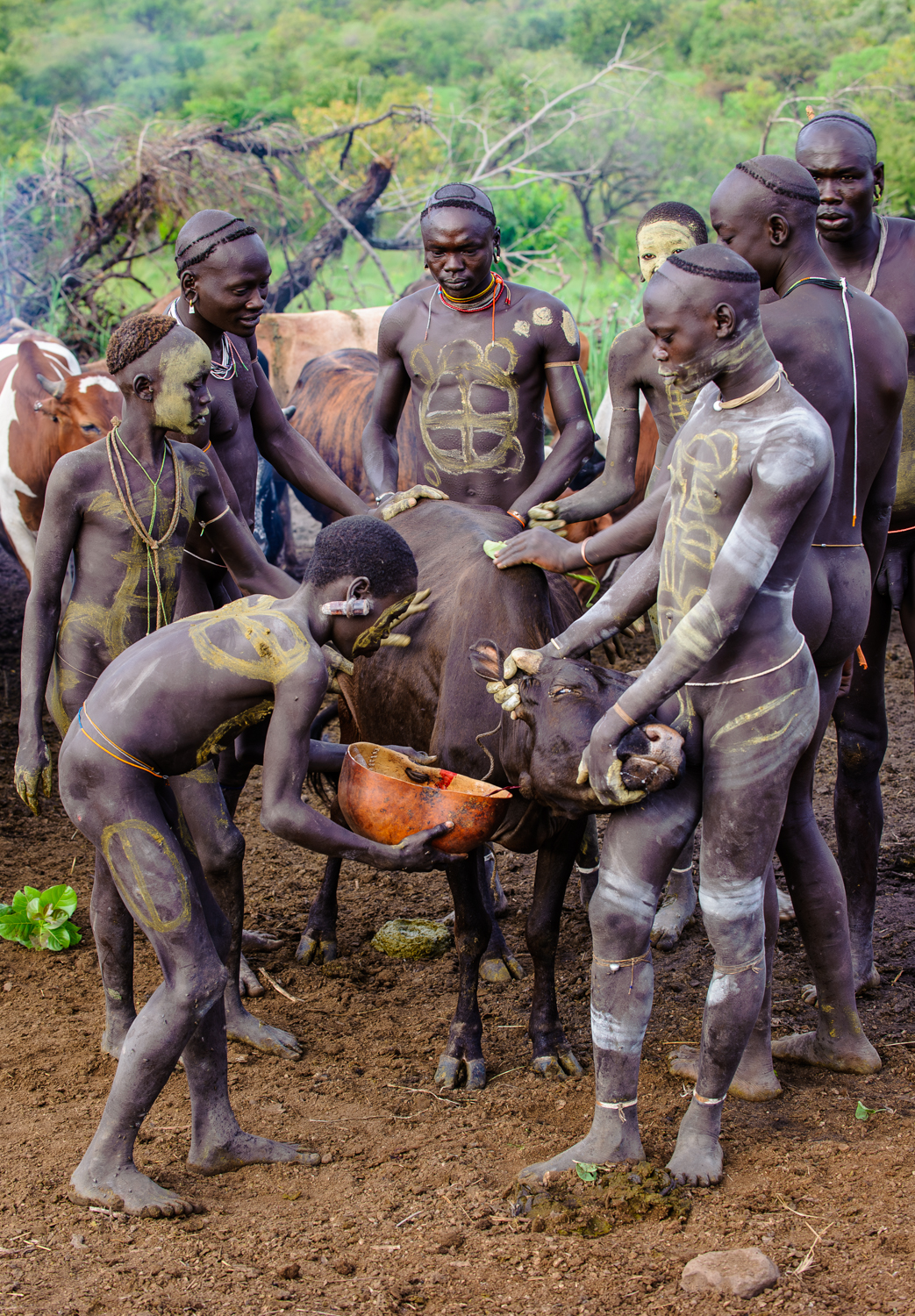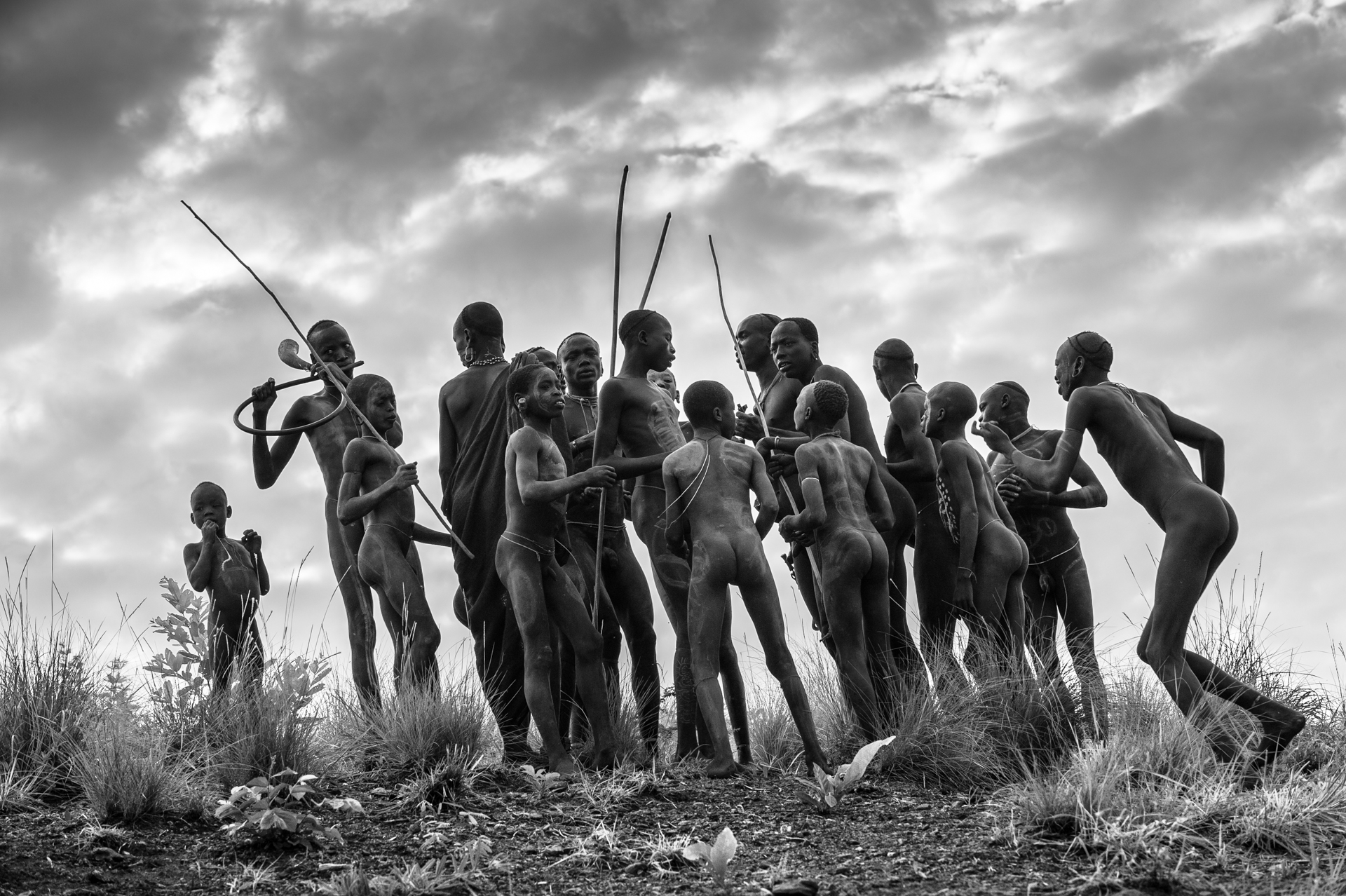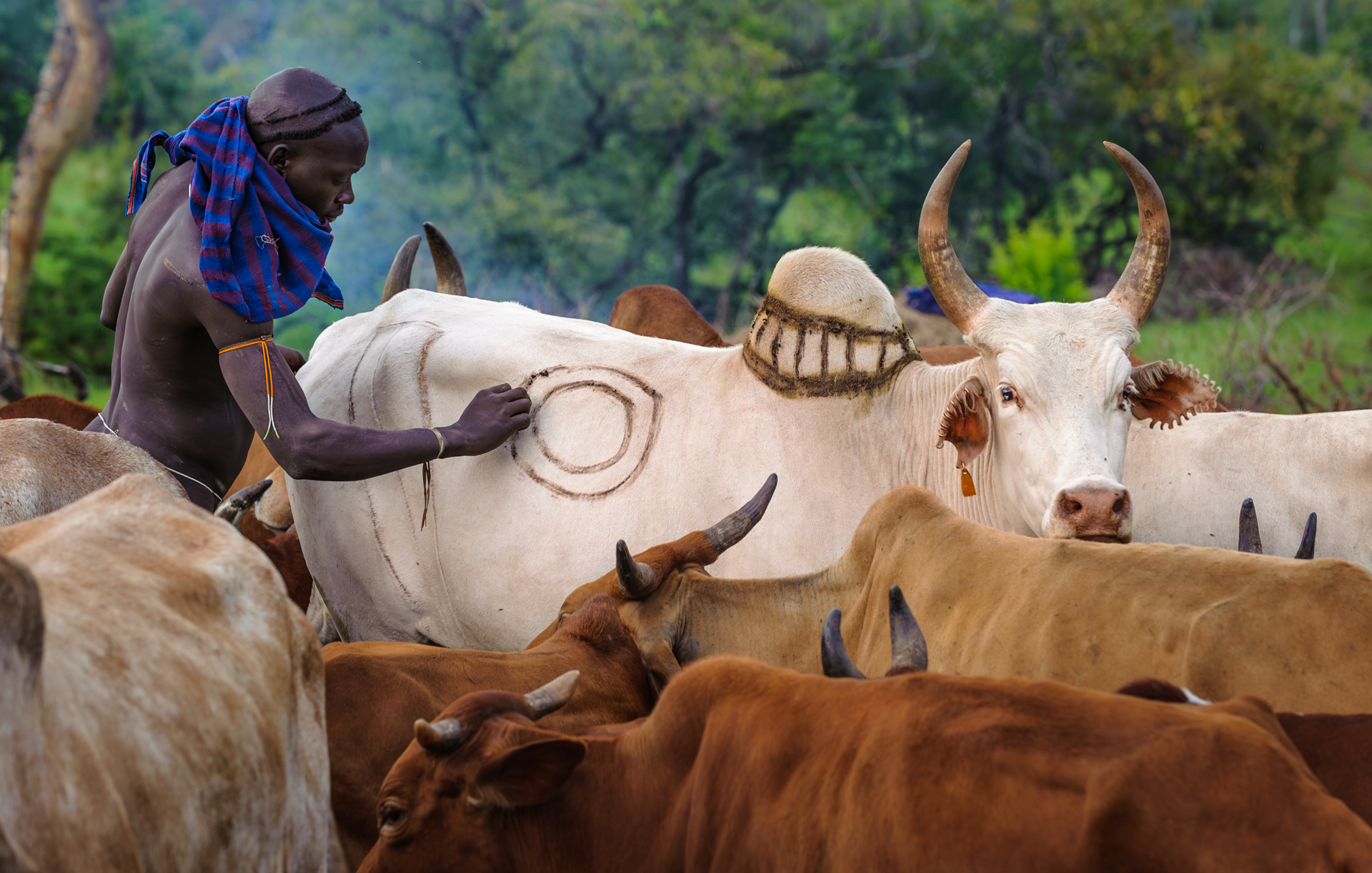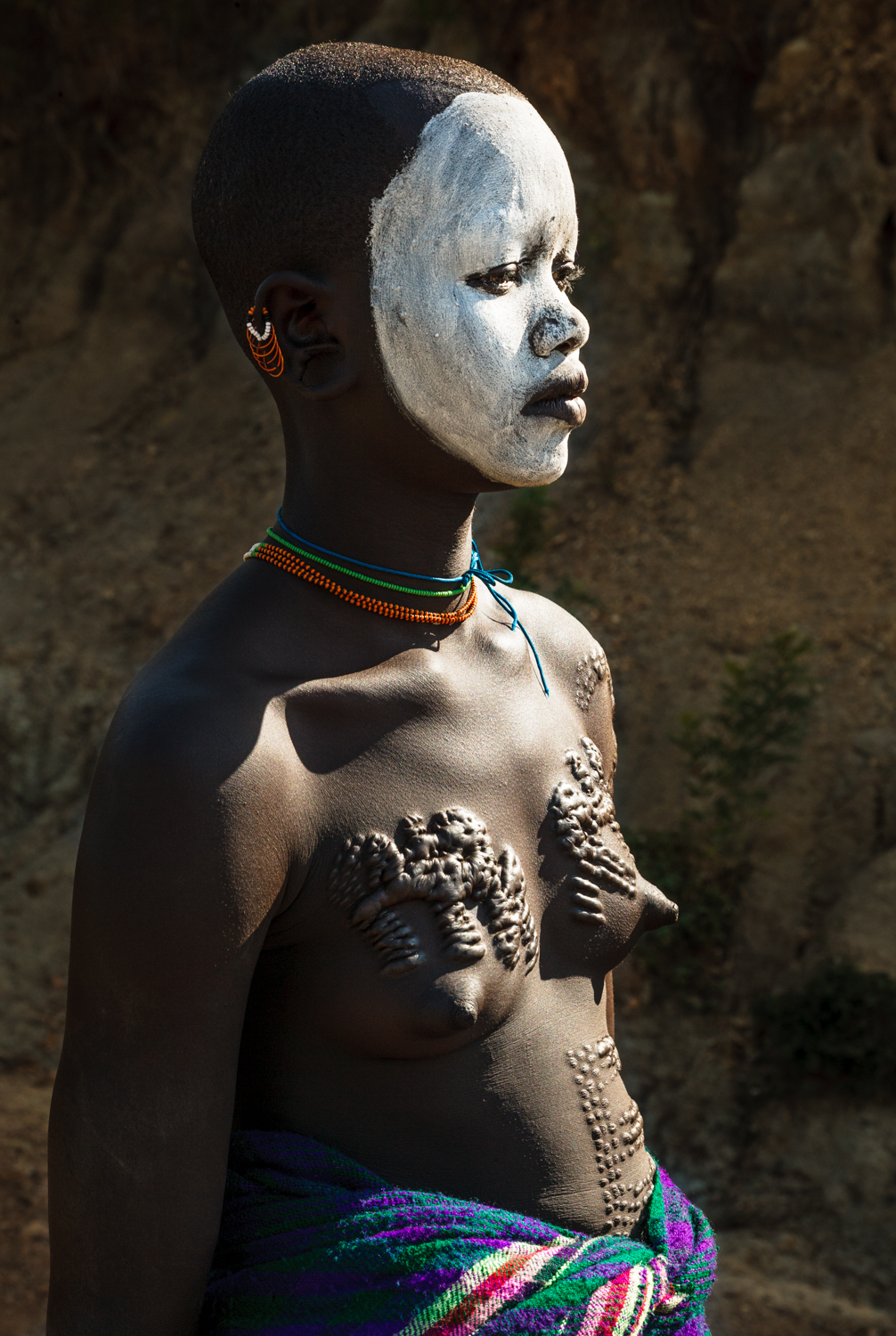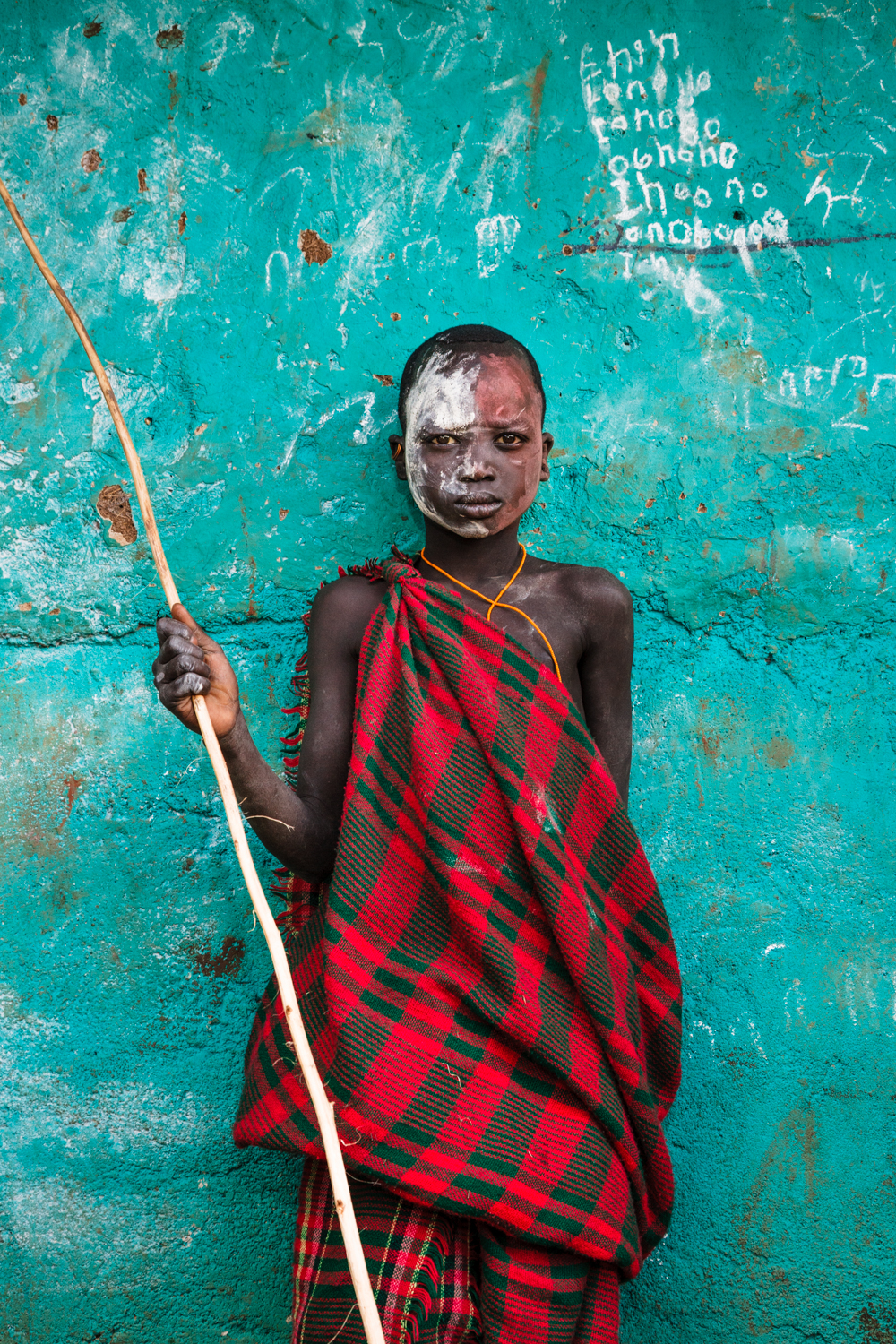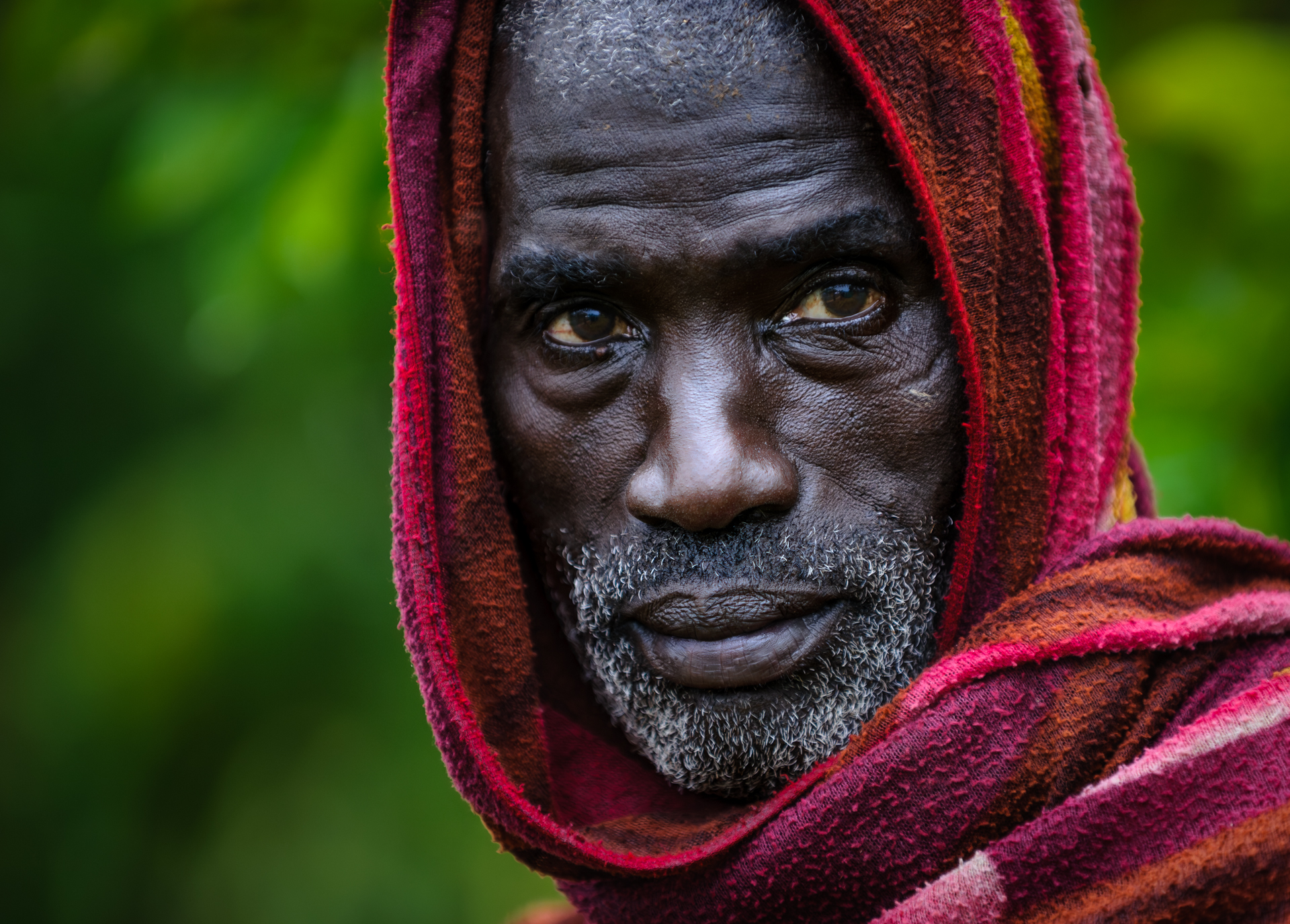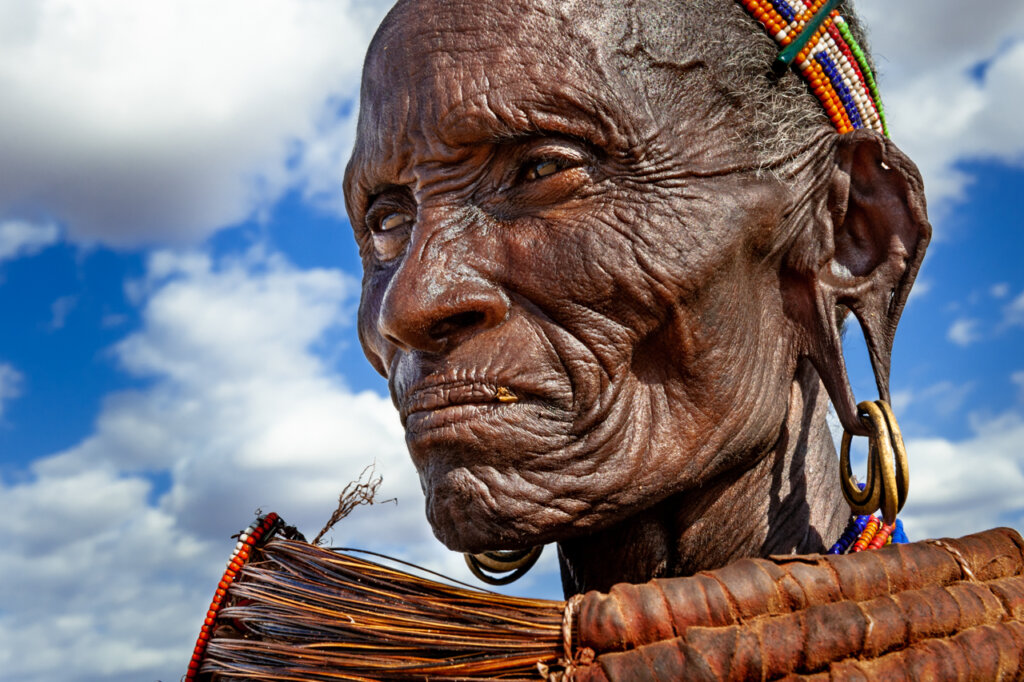Spirit of the Suri : Omo Valley, Ethiopia
Over the course of several years, I had the rare opportunity to visit and photograph the Suri (or Surma) people of the Upper Omo Valley, in one of the most remote corners of southwestern Ethiopia. This land, rugged, raw, and deeply isolated, lies near the borders of South Sudan and Kenya. It’s a place where time slows, and life moves to the rhythms of nature, tradition, and survival.
The Suri are agro-pastoralists whose lives revolve around their cattle. These animals are not just a food source, they represent status, wealth, and identity. I spent days and nights in their villages and cattle camps, watching them care for their herds with tenderness and skill. They whispered and sang to the cattle, smeared ash on their hides to protect them from insects, and slept among them as if they were family.
Reaching the Suri is never easy. Overland, it’s three punishing days from Addis Ababa on rough roads. I usually flew in with the only pilot I trusted, Solomon, who could land a Cessna Grand Caravan in a narrow clearing that also doubled as the donga stick-fighting arena. It was always a tight landing, sometimes brushing tree branches on the way in.
The Suri express themselves in powerful visual ways. They use natural pigments, chalk, clay and dung to create intricate ephemeral body paintings that change daily. Their adornments include headdresses made from flowers, vines, feathers, and seed pods, along with beads, leather, and in some cases lip plates or scarification. These are not costumes; they are expressions of identity, beauty, and resilience.
Their ceremonies are intense and unforgettable. The donga stick fights, the chanting, the rhythmic movement, these are displays of strength, community, and cultural continuity. Life here is vibrant, but also incredibly fragile. There are no doctors, no clinics, no ambulances. Hunger and disease are ever-present. Gunfire in the night, whether celebratory or threatening, is common.
One night, I was woken in my tent by the wails of a woman whose child had died. She cried into the darkness for hours. Slowly, the entire village joined her. It was a collective mourning, raw and soul-shaking. I will never forget it.
And yet, in the face of hardship, the Suri remain strong. They resist the pressures of modernity and government intrusion. They live according to their own values, deeply tied to the land and each other.
The images in this gallery were created over many visits, across difficult terrain and deep into the heart of a remarkable people. I was welcomed into their world, and I did my best to honor that trust. These photographs are not just about documenting, they are about connection, dignity, and the enduring spirit of the Suri people.

